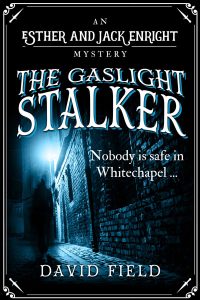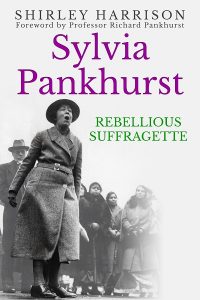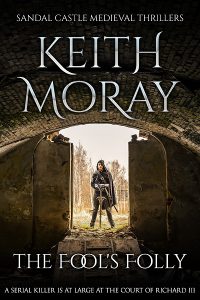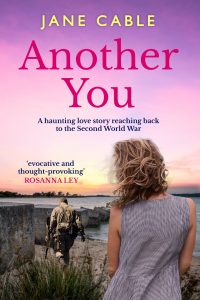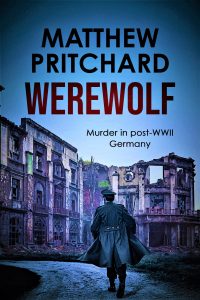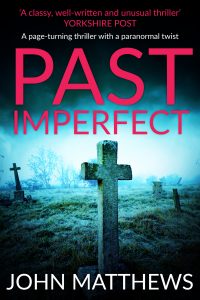Keith Moray is the author of the SANDAL CASTLE MEDIEVAL THRILLERS, historical murder mysteries set in Yorkshire. The first two books in the series, THE PARDONER’S CRIME and THE FOOL’S FOLLY, are available to pre-order.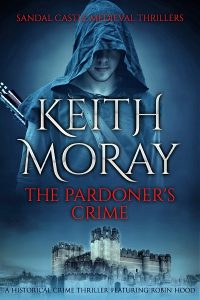
I live within arrowshot of the ruins of Sandal Castle. As a family doctor in Yorkshire, for thirty years I saw it most days while driving around the area on my morning visits. Nowadays, in semi-retirement I go running around the old battlefield where thousands of knights and soldiers once fought and died during the Wars of the Roses.
I plot and daydream when I run. Happily, a short story entitled The Villain’s Tale about a miscreant in a rat-infested dungeon in Sandal Castle won a Fish Award. It spurred me on to start plotting the Sandal Castle Medieval Thrillers.
Sandal Castle
The fine old motte and bailey was built in the 12th century by the De Warenne family during the reign of Henry I. From the 14th century it passed into royal ownership and is best known for its involvement in the Battle of Wakefield in 1460, when Richard, Duke of York was mortally wounded. His son, King Edward IV established it as one of the two bases for the Council of the North in 1472. Effectively, this was the government for the North of England. After he died, his younger brother, King Richard III began rebuilding the castle in 1483. The work stopped when he lost his life at Bosworth Field in 1485.
Thanks to television and movies, most people associate the outlaw Robin Hood with Sherwood Forest and Nottingham. However, the medieval ballads say that his stomping ground was actually Barnsdale Forest, which once covered a vast swathe of Yorkshire. The ballads also mention King Edward and various Yorkshire characters, such as George-a-Green the Pinder of Wakefield, and many actual locations in Wakefield are referred to.
The Court Rolls of the Manor of Wakefield
In medieval times, The Manor of Wakefield was the largest in Yorkshire and one of the largest in England, covering some 150 square miles. The Court Rolls of the Manor of Wakefield are a national treasure, consisting of a continuous recording of court proceedings from the late thirteenth century until the 1920s.
The outlaw and bowman Robert Hode, a sure candidate for being the historical Robin Hood, is mentioned in the Court Rolls of 1316.
The Sandal Castle Medieval Thrillers
 If you look at the picture of Sandal Castle today you will see exactly where I had the germ of the idea for The Pardoner’s Crime, the first novel in this series. It is a view of the castle from under what I fancifully call Robin Hood’s tree. I blended historical facts, medieval ballads and a good deal of imagination to come up with a historical whodunit.
If you look at the picture of Sandal Castle today you will see exactly where I had the germ of the idea for The Pardoner’s Crime, the first novel in this series. It is a view of the castle from under what I fancifully call Robin Hood’s tree. I blended historical facts, medieval ballads and a good deal of imagination to come up with a historical whodunit.
There are three completed novels and a fourth in the pipeline. They are not all about the same characters; indeed they are set at different times, because Sandal Castle with its fascinating history is the historical backdrop to them. They are all inspired by Chaucer’s The Canterbury Tales and some of the characters that he described so beautifully. The Pardoner’s Crime fuses The Canterbury Tales with the Robin Hood legends. The reader is challenged to uncover the true villain in each novel.
Click here to pre-order THE PARDONER’S CRIME.
Click here to pre-order THE FOOL’S FOLLY.
Sandal Castle image credit: Keith Moray
David Field is the author of the Carlyle & West Victorian Mysteries.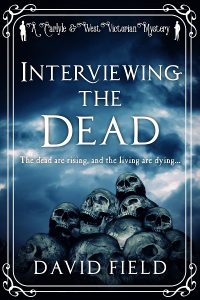
As a historical novelist in search of bygone eras to recreate, I’ve always been fascinated by the late Victorian period. It was a time of contrasts, with vast scientific, medical and technological breakthroughs coming at a time when ordinary folk were obsessed with communicating with the dead. Victoria seemed destined to rule forever over a rich empire, while her subjects in its industrial cities, and most notably in its London capital, were existing in conditions of abject poverty.
Following the success of my Esther & Jack Enright mystery series, which began with the search for Jack the Ripper and ended just as the nineteenth century was about to, I was urged to return to this rich seam of inspiration, and there was – for me, at least – one obvious place to start.
When Arthur Conan Doyle abandoned medical practice and created his fascinating character Sherlock Holmes, he was inspired by his memory of a real life Sherlock. His name was Dr Joseph Bell, and he had taught anatomy to his classes of medical students at Edinburgh University, one of whom had been Doyle himself. Bell had what was then a unique approach to his analysis of the cadavers that were to be found on his mortuary slab, something that is second nature to modern forensic examiners, but was revolutionary in its day. He approached ‘cause of death’ by examining, not just insides of the bodies, but the clothing and personal possessions with which they arrived, and telltale indications on the skin, such as needle marks, abrasions, rough working hands and suchlike. From this he made logical deductions that were of value to police in unexplained death enquiries, and he taught his students to apply the same techniques when they went out into the world.
There must have been several generations of medical graduates from Edinburgh who were taught ‘the Bell method’, and it was no great stretch of the imagination for me to create Dr James Carlyle, anatomist and general surgeon at Whitechapel’s London Hospital – a medical doctor with the same professional training as Conan Doyle and the same inquisitive, logical mind as Joseph Bell.
His first challenge – described in the first novel in my new series, INTERVIEWING THE DEAD – is to debunk the panicked belief among the populace of the East End that the spirits of those buried in a Plague Pit in Aldgate have returned to take their revenge for the disturbance of their resting place. That belief has taken hold easily, given the obsession with Spiritualism that gripped the country during this period.
But there were also other ‘spirits’ abroad, and they were advocating for great social change. Chief among these were the Suffragists, who campaigned for ‘votes for women’ and Suffragettes who took on entire police forces in public demonstrations. There were also other groups of feminists, as we would call them today, who advocated for equality of admission to professions such as medicine and the law. This was how Dr James Carlyle’s daughter, Adelaide, was created, as a young woman whose opinion of men and their dominance of society could not have been any lower – until she meets my third new character, Matthew West.
Although the Anglican Church was ahead of all other Protestant movements in the 1890s, it was demonstrating a social elitism that drove away ordinary working folk, and left the pastoral door open for more working-class religious initiatives and crusades among the poor. ‘Methodism’ had become a religious movement of its own, with its own hierarchy, but its progenitor, ‘Wesleyism’, still had its head above the parapet, and Wesleyan street preachers such as Matthew West might be found on corners, in market places, and outside factory and dockside gates.
Matthew has his own reasons for wishing to hose down any belief in the return of vengeful spirits of the dead, and when he finds himself associated with Dr Carlyle in the search for the truth, he comes up against the fiery Adelaide, who works as her father’s assistant. They influence each other’s views on life as they are drawn imperceptibly into a mutual attraction.
The stage is set for my next series. I hope you’ll join me in following the exploits of this unlikely trio, and I look forward to learning your reaction to them.
Click here to pre-order INTERVIEWING THE DEAD!
Sapere Books has reached its second birthday!
We now have a family of over 50 authors and plenty of chart successes under our belt.
To celebrate our first two years as a company, we threw a party in London and caught up with our fabulous authors over drinks and nibbles. All have exciting new projects brewing. Here is a taster of what to expect from our authors in 2020.
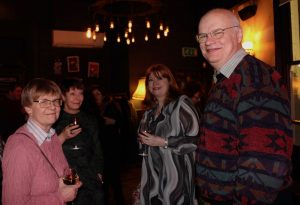
Alexandra Walsh and Graham Brack
Graham Brack is working on a historical fiction series, the Master Mercurius Mysteries, set in the 17th century. The first book, Death in Delft is already available to pre-order, and more will follow later this year.
Keith Moray has written the Sandal Castle Medieval Thriller series, historical murder mysteries set in Yorkshire. The first book, The Pardoner’s Crime, is available to pre-order, and more are soon to follow.
Alis Hawkins’ brand-new Medieval novel The Black and The White will be published later this month.
David Field is working on a brand-new Victorian mystery series, the Carlyle & West Mysteries, which will launch very soon.
Jane Cable has another thought-provoking romance with echoes of the past launching soon.
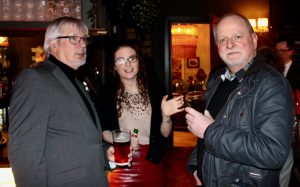
Stephen Taylor, Caoimhe O’Brien, and Keith Moray
Gillian Jackson has written a new psychological thriller, which will be released this summer.
Natalie Kleinman will be joining our excellent Regency Romance authors with her sparkling new books, which will feature strong and resourceful heroines.
Ros Rendle will be launching her Strong Sisters series this year – sweeping sagas that will explore family relationships and rivalries.
Seán Gibbons’ gritty urban crime series set in Galway will launch later this year.
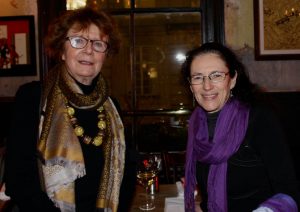
J. C. Briggs and Linda Stratmann
Stephen Taylor has a series of 18th century novels coming out soon.
And there are new books coming out soon from fan-favourite series, such as Alexandra Walsh’s Marquess House Trilogy, Elizabeth Bailey’s Lady Fan series, J C Briggs’ Charles Dickens Investigations series, Gaynor Torrance’s DI Jemima Huxley series, Charlie Garratt’s Inspector Given series, Michael Fowler’s DS Hunter Kerr series, Valerie Holmes’ Yorkshire Saga series, Marilyn Todd’s Julia McAllister series, Simon Michael’s Charles Holborne series, John Matthews’ Jameson & Argenti series and Linda Stratmann’s Mina Scarletti series.
For more information on our latest releases and ebook deals sign up to the Sapere Books newsletter.
To celebrate International Women’s Day (8th March) we asked five of our authors to tell us all about their favourite female writers. Read on to find out more about their literary heroines!
Alis Hawkins, author of The Black and the White and Testament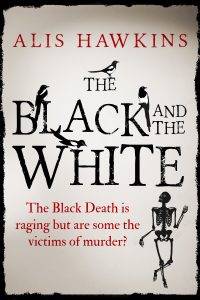
My all-time favourite author is Joanna Trollope. An odd choice for a crime author? Not at all. Wonderful writing transcends genre, and she inspires me by drawing characters with a fine eye to dialogue and interaction; by bringing whole scenes to life with a few telling details; by making her readers care passionately about what happens to her characters.
Joanna Trollope has shown me how essential it is to do your research meticulously, to immerse your readers in the world you’re writing about – whether it’s a cathedral close or a dairy farm, a ceramics factory or a Spanish vineyard – but never to include a single unnecessary fact that might slow the action down.
Each Joanna Trollope novel begins with a single key event that turns the lives of all her interrelated characters upside down – and what else does a murder at the beginning of a book do but that?
Order THE BLACK AND THE WHITE here
M. J. Logue, author of the Thomazine and Major Russell Thrillers
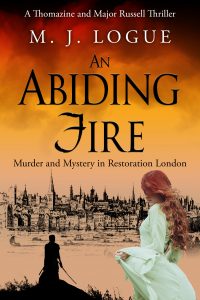 My busy little mind raced over all the possibilities – Tanith Lee, Storm Constantine, Dorothy Dunnett, Helen Hollick … but there can be only one, for me. Aphra Behn, of course. It’s not the what or the how of her writing, but the enigma and the old-school glamour of the writing persona she created – the international woman of mystery, the myths with which she surrounded herself – that inspires me. (Three hundred and fifty years later, she’s still a mystery!)
My busy little mind raced over all the possibilities – Tanith Lee, Storm Constantine, Dorothy Dunnett, Helen Hollick … but there can be only one, for me. Aphra Behn, of course. It’s not the what or the how of her writing, but the enigma and the old-school glamour of the writing persona she created – the international woman of mystery, the myths with which she surrounded herself – that inspires me. (Three hundred and fifty years later, she’s still a mystery!)
She was the first female literary professional, she did all her own publicity, and she’s still incredible. Possibly a spy, possibly bisexual – both, I suspect, images she manipulated to the hilt – and definitely a woman who knew how to work an audience. The fact that her plays and poems still resonate with us now is remarkable. She created characters that speak to us, no matter what clothes they’re wearing.
Or find out more about the Thomazine and Major Russell Thrillers here
Deborah Swift, author of Past Encounters and The Occupation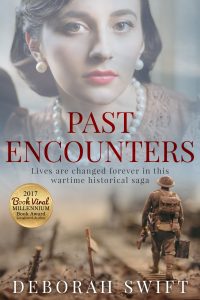
The first Rosie Tremain novel I read was Music and Silence, set in the Danish court in the early 17th Century. Marvellously atmospheric, it shifts between different narrative styles: small vignettes that add up to a magnified version of life in Copenhagen that is so real, you feel you are there.
I’ve read all her other books since, including the more contemporary The Road Home, about an economic migrant arriving in the UK, who observes with bafflement the English obsession with status and success. I admire Tremain’s precision, and that is something I want to achieve in my own writing.
Gaynor Torrance, author of the DI Jemima Huxley Thrillers
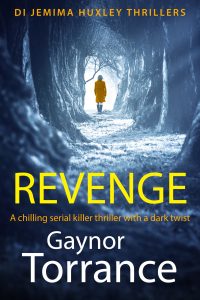 I write in the genre I love to read, and being an avid reader of crime fiction, there are so many female authors whose work I admire. A particular favourite of mine is Sophie Hannah. I first stumbled across her books by chance, when I borrowed a copy of Little Face from my local library. Once I started reading, I couldn’t put it down.
I write in the genre I love to read, and being an avid reader of crime fiction, there are so many female authors whose work I admire. A particular favourite of mine is Sophie Hannah. I first stumbled across her books by chance, when I borrowed a copy of Little Face from my local library. Once I started reading, I couldn’t put it down.
Since finishing that particular book, I’ve worked my way through much of the Culver Valley Crime series. I adore the originality and complexity of Sophie’s plots, which have lashings of intrigue and misdirection. The central characters, DS Charlie Zailer and DC Simon Waterhouse, are such a great pairing. They’re both so dysfunctional and vulnerable in many ways, yet somehow form a compelling and likeable team.
Or find out more about the DI Jemima Huxley Thrillers here
Alexandra Walsh, author of The Marquess House Trilogy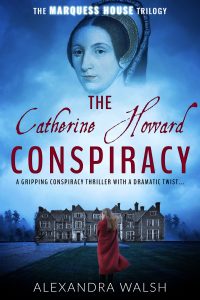
She may be old-fashioned, and her comments can make me wince, but take away the occasionally dubious contents of a bygone era and Enid Blyton remains a huge inspiration with the breadth of her storytelling skill. In her adventure books, her plotting is deft and sharp, while in her fantasy books her imagination is broad and tantalising.
As a child, she shaped my reading habits but my eureka moment came when I was reading In the Fifth at Malory Towers. I was already harbouring ambitions to be a writer, but it was only a dream. Then, the heroine of the series, Darrell Rivers, wrote the school pantomime. Suddenly, I thought, If Darrell can do it, then so can I! My life path was set. From reading Enid Blyton’s work, I learned that girls were stronger and more effective if they worked together, that girls could do as much as boys and usually more, and that if you were determined you could solve anything – lessons that still resonate today.
Order THE CATHERINE HOWARD CONSPIRACY here
Or find out more about The Marquess House Trilogy here
DEATH IN DELFT by Graham Brack is the first historical murder investigation in the Master Mercurius Mystery series: atmospheric crime thrillers set in seventeenth-century Europe. Click here to pre-order.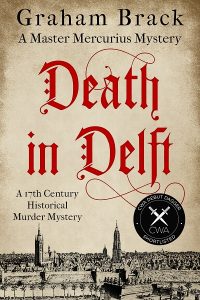
Most crime writers have a keen sense of place. Something about a setting grabs them and tells them there is a story here.
So it was with me. When you live in Cornwall, the quickest place to get to on the continent is Amsterdam, because there is a flight from Exeter, so over the years my wife and I have been frequent visitors to the Netherlands.
The first place we went was Delft. As is well known, Delft is the city of Vermeer; but it is also the city of Antony van Leeuwenhoek, the father of modern microscopy. Not only did they live within around 250 metres of each other, they were born within a few days of October 1632. Can you imagine being a schoolteacher who had two such boys in their class?
I was turning this around in my mind when the idea came to me that people often ask whether detection is an art or a science. Well, if these two could not tell you, who could? Making them into detectives in their own right would be a bit of a stretch, but they could vie to assist a third person, and that’s how my Dutch series was born.
In the year 1671, three young girls disappear from their homes in Delft. Two come from poor families, but one is the daughter of a local dignitary. The mayor recognises that he needs help to find these girls, and writes to the nearby University of Leiden, asking the Rector to send the cleverest man he can spare.
Master Mercurius is undoubtedly clever. He is, in effect, an Oxbridge don transported to another time and country, but like many an academic he is completely wrapped up in his subject – moral philosophy – and has very little experience of the world. He does not want to let the Rector and the University down, but he is acutely aware that brains alone will not solve this mystery. Fortunately, he has Vermeer and Van Leeuwenhoek to help, and together they set out to retrieve the girls and discover the culprit. In a nutshell, that is how I came to write Death in Delft, in which Mercurius narrates – very frankly – his experiences.
I don’t think it counts as a spoiler if I say that he is successful and returns to his study with something of a reputation. Unfortunately for him, in 1674 the Stadhouder – the man we know as King William III – needs some assistance in putting down a conspiracy which seeks to remove him from power. It seems likely that someone in high places is pulling the strings, so William needs an intelligent outsider to look into the matter, and his gaze falls upon Mercurius, who is summoned from Leiden. In Untrue till Death Mercurius will find himself personally threatened – and since he is no man of action, he does not enjoy it at all.
However, success in unravelling this mystery only means that when William next needs help he thinks once more of Mercurius, so in 1676 our hero is packed off on a boat to London as part of the embassy negotiating the marriage of William III and Princess Mary. The trouble is that somebody does not want the wedding to go ahead, so in Dishonour and Obey Mercurius finds that there is more to marriage preparation than sitting down with the young couple to talk them through their vows.
Mercurius is a very reluctant detective, as he never tires of telling us. He likes nothing better than sitting quietly reading a book, ideally in a tavern where people leave him alone. As a man of the cloth, he has a strong moral sense but he is a bit squeamish about the punishments of the day. Of course, he knows that a couple of hours of misery on a scaffold are nothing compared with what awaits an unrepentant criminal in the next life, but he feels responsible for one and not for the other.
He also has no idea at all about women. He is not immune to their charms; in fact, he spends much of his time under the spell of young women, but Mercurius has a little secret.
And no, I’m not going to tell you what it is. You’ll have to read the books to find out.
Celebrate Valentine’s Day with a timeless love story! We’ve chosen four of our favourite romantic reads for you this February.
Summer at Hollyhock House, Cathy Wallace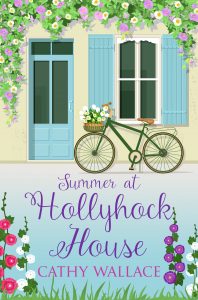
After breaking up with her long-term boyfriend, Faith Coombes is looking for a new start. Her search leads her back to where she began: the village where she grew up, home to her best friend and an old flame. As the summer wears on, Faith finds solace in her familiar surroundings, and her feelings for the boy she once adored begin to rekindle. But as memories of hurt and heartbreak start to resurface, Faith must decide whether she can put the past behind her and give love a second chance.
A charming and heart-warming tale of missed opportunities, self-discovery and the bittersweet sting of true love, Summer at Hollyhock House is sure to bring both tears and laughter.
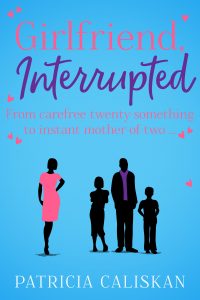 Girlfriend, Interrupted, Patricia Caliskan
Girlfriend, Interrupted, Patricia Caliskan
After a whirlwind romance, Ella Shawe takes the plunge and moves in with her boyfriend, Dan – plus his two children and pet dog. Far from domestic bliss, Ella must now learn to cope with a resistant family, a hellish mother-in-law and Dan’s impossibly perfect ex-wife. But with the future of her blossoming relationship on the line, Ella is determined to find a way to fit into the chaos…
Full of modern dilemmas and sparkling humour, Girlfriend, Interrupted is a fabulous British comedy with a spirited and relatable heroine at its heart.
Women Behaving Badly, Frances Garrood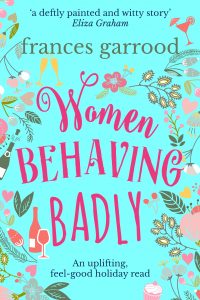
Three very different women are all stuck with impossible romances: Alice has an irresponsible ex and a noncommittal lover; Mavis is having an affair with a father of two; and Gabs is a high-class escort who has fallen in love with someone she can never be with. In the eyes of the Catholic church, all three women have gone astray. But their priest, Father Cuthbert, is determined to reform them. As Alice, Mavis and Gabs form an unlikely friendship, each begin to question what is most important to them – and it soon becomes apparent that the lively trio can’t be ‘cured’ that easily…
Original, uplifting and fabulously witty, Women Behaving Badly is a moving tale of heartache, self-love and the warmth and power of female friendship.
Following the breakdown of her marriage, Marie is still learning to heal. But as the head chef of The Smugglers – the pub co-owned by her ex-husband – she finds herself constantly stretched and plagued by headaches. With local celebrations planned for the 60th anniversary of D-Day, Marie expects to be busier than ever – but she could never have prepared for the changes that are about to hit. Paxton, a charming American soldier, seems to be just what Marie is looking for: a bit of light-hearted fun. But as they grow closer, she begins to wonder if he is all that he seems…
Drawing on World War II history as well as the horrors of modern combat, Another You is a sweeping story of trauma, courage, and self-reclamation.
Like the look of these romantic reads? Sign up to the Sapere Books newsletter for new releases and deals in romantic fiction.
Sapere Books are proud to be sponsoring the Romantic Novelists’ Association’s Popular Fiction Award. Read on to find out more about this year’s sparkling shortlist!
The Glittering Hour, Iona Grey, Simon & Schuster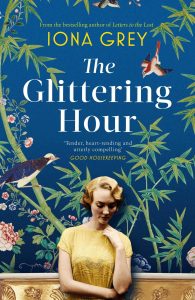
Set in 1925, The Glittering Hour is a beautifully written historical saga with a clandestine romance at its core. Young socialite Selina Lennox lives a life of reckless hedonism: drinking, partying and often having her exploits captured by the press. However, one night, a chance encounter with struggling artist Lawrence Weston changes everything. An intense attraction between the two blossoms into forbidden love, but as the summer draws to a close, the dark side of pleasure is revealed to both.
Ten years later, Selina’s nine-year-old daughter, Alice, is staying at Blackwood Hall with her grandparents. And as she reads Selina’s letters, the mystery of her mother’s past heartache begins to unravel…
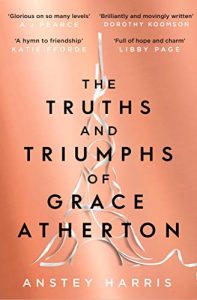 The Truths and Triumphs of Grace Atherton, Anstey Harris, Simon & Schuster
The Truths and Triumphs of Grace Atherton, Anstey Harris, Simon & Schuster
The Truths and Triumphs of Grace Atherton is a charming, powerful story of friendship and healing in the face of heartbreak. Residing in Paris with her long-term partner, cellist Grace Atherton lives in a blissful bubble of music and love. But when her world falls apart, Grace seeks comfort from two unlikely allies: eighty-six-year-old Maurice Williams and tough-talking teenager Nadia. All three have buried secrets and sufferings but, as their bonds grow, each are gradually compelled to open up. As the pain of the past begins to ease, the trio embark on a journey toward renewed happiness, self-acceptance, and hope.
The Flatshare, Beth O’Leary, Quercus Fiction
The Flatshare is a quirky, uplifting romcom that follows two people thrown together at just the right moment. When her relationship falls apart, Tiffy Moore agrees to share a one-bedroom flat with Leon Twomey. However – since Tiffy works 9 to 5 and Leon is a palliative care nurse who works nights and weekends – the two initially never meet. Through post-it note conversations, Tiffy and Leon slowly win each other’s trust and friendship, and are able to support each other through the pressures and frustrations of their difficult circumstances. With its poignant explorations of justice and unhealthy relationships interwoven throughout, The Flatshare is both an entertaining and heart-warmingly tender read.
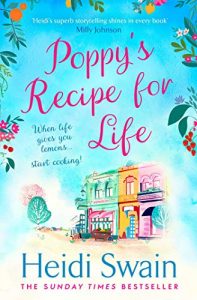 Poppy’s Recipe for Life, Heidi Swain, Simon & Schuster
Poppy’s Recipe for Life, Heidi Swain, Simon & Schuster
Poppy’s Recipe for Life is a warm and witty story of unlooked-for romance, family ties, inner demons, and the power of community. Poppy can’t wait to live out her dream of moving into a cosy cottage in Nightingale Square, close to a community garden where she can indulge her love of making preserves and pickles. However, when old family tensions once again bubble to the surface, her idyllic happiness is threatened. Amidst the complications, Poppy must also learn to get along with her prickly new neighbour, Jacob. But as the two grow closer, she begins to realise that the surly recluse may be more than he seems…
The winner will be announced at Leonardo Royal London City Hotel on Monday 2nd March.
Jean Stubbs is the author of the INSPECTOR LINTOTT INVESTIGATIONS series and the BRIEF CHRONICLES series. In celebration of her life and work, we asked her daughter, Gretel McEwen, to share her memories of Jean and her writing.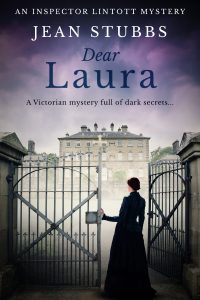
We lived in a world of stories, the line between reality and fiction often blurred. As a child, my mother had always made up plays and stories — her brother an unwilling but worshipful bit part player. A generation later, my mother made up fictional characters for my brother and I — she brought them to life with special voices and we talked to them. Alfred was a gentle and not very bright giant whose answer to any question was 29!
My mother had her first novel, The Rose Grower, published at the age of 35 and from that moment our house was filled with a whole cast of characters. I came home from school one day to find her weeping over the death of Hanrahan (Hanrahan’s Colony). And the hanging of Mary Blandy (My Grand Enemy) brought very dark clouds into our house.
As my mother surfed her way through this creative theatre, we learned to read the signs — coffee cups on every surface, a sink full of dishes and no plans for supper meant a good and productive writing day. A house full of the smell of baking, a gleaming kitchen and rice pudding in the oven either meant the dreaded writer’s block or a completed first draft. So we too surfed, adjusted and gloried in the passing show. My mother always wrote on our vast Edwardian dining table, and her writing companion was always the current much-loved cat. They had their own specially typed title page upon which to sit, since she had learned the hard way that cats like to sit on the top copy with muddy paws! The mystery cat was the black one who sat on a certain stair — but when you went to stroke him he was not there … another blurred line…
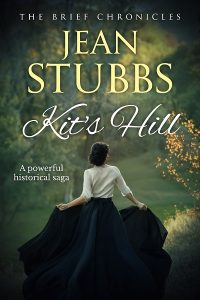 I felt closely involved with each novel as it progressed. At the end of a good writing day, my mother would read aloud to me the latest chapter — a fine reader with a different voice for each character, once more bringing it all to life. She wrote in long hand at first, then, as the book grew, she typed chapters then full copies and carbon copies for her publisher, Macmillan. Later, she was one of the early authors to use a word processor. When the first print draft came from the publisher, we would sit at each end of the dining room table and proofread — calling out corrections to each other and marking them on the manuscript.
I felt closely involved with each novel as it progressed. At the end of a good writing day, my mother would read aloud to me the latest chapter — a fine reader with a different voice for each character, once more bringing it all to life. She wrote in long hand at first, then, as the book grew, she typed chapters then full copies and carbon copies for her publisher, Macmillan. Later, she was one of the early authors to use a word processor. When the first print draft came from the publisher, we would sit at each end of the dining room table and proofread — calling out corrections to each other and marking them on the manuscript.
Publication day was a celebration, shopping an occasion, dinner parties a reason for more excellent cooking, and royalty cheques a relief! When I left home, I greatly missed being a bit part player in this imaginative and unpredictable life of stories — and I missed the ghostly companions.
CLICK HERE TO FIND OUT MORE ABOUT THE INSPECTOR LINTOTT INVESTIGATIONS
CLICK HERE TO FIND OUT MORE ABOUT THE BRIEF CHRONICLES
Deborah Swift is the author of PAST ENCOUNTERS and THE OCCUPATION.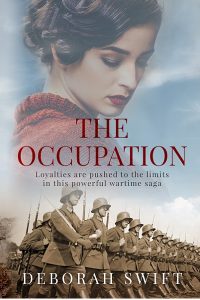
During World War Two, the Channel Islands were the only part of the British Isles to be occupied by the Germans. I saw a picture online of a British ‘bobby’ or policeman talking to a Nazi soldier, and it sparked my interest. Jersey is a tiny island, only eight miles long, so I was fascinated to find out how the population managed to keep up their morale, when as many as fifteen thousand (yes, you read that right) Germans had taken over. What happened to the Jews on the island, or to the other groups that the Nazis considered ‘undesirable’? How did it feel to be invaded by a foreign army?
The story became much more interesting and involved the more I uncovered. At the beginning of the war, Jersey had been ‘stood down’ for military action, as nobody believed the Germans would want such a small territory. Men of fighting age had been sent elsewhere, so it was a population of women and farmers. When the invasion came, it was a total surprise and there were no defences in place. After a brief bombing campaign, the German army just walked in. Before long, white ‘surrender’ flags were fluttering from Jersey houses.
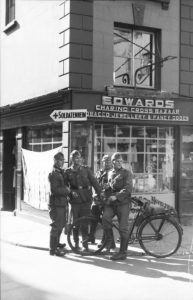
German soldiers standing in King Street, St Helier, Jersey
This was the beginning of Nazi rule on the islands, which was supposed to be a ‘peaceful’ occupation. Of course, when you are invaded it might look peaceful, but underneath the tensions soon began to show. The oppressive Nazi force vastly outnumbered the British people left on the island. Those that remained had to find ways to resist, and ways to outwit the unwanted intruders in their traditional way of life. German rule took over – people had to speak German, cars had to drive on the right, many things that had been allowed before, such as owning a car or a radio, were ‘verboten’ – forbidden. The Germans began a vast building programme to fortify the island, which they intended to use at a military base to attack England. The vast concrete fortifications were built by slave labour.
My story is based on several true accounts, although I have welded them together and compressed them into a fictional narrative. Céline and Rachel’s story was inspired by the true Jersey story of Dorothea Weber, who hid her Jewish friend Hedwig Bercu from the Germans. More on this surprising real life story can be found here.
Fred’s story in The Occupation is based on a number of accounts of life in the Germany army, and in the French Resistance. I was interested to examine the idea of occupation from the point of view of both the occupier, and the occupied. What always interests me in fiction is the conflicts that arise because of the circumstances of war, where one nation is pitted against another, and people who might have been quite amicable before the conflict are forced to swear allegiance to a sharp division between one side and another, when in reality, and in people, many shades of grey exist.
For an overview on the occupation of Jersey, the BBC history site has several pages on this topic. For more on Deborah’s books, find her at www.deborahswift.com or on Twitter @swiftstory.
CLICK HERE TO ORDER THE OCCUPATION
Image Credit: Bundesarchiv, Bild 101I-228-0326-34A / Dey / CC-BY-SA 3.0. Accessed via Wikimedia Commons.
Hi Michael! Welcome to the Sapere Books blog!
We are very excited to be publishing your HUNTER KERR detective series. Could you tell us a bit about what first got you into writing?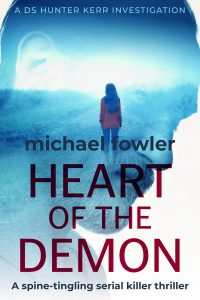
I started at about the age of twelve, and it was a science fiction apocalyptic story, written in two exercise books from Woolworths. I had an uncle, who was not only an avid reader but had a wonderful imagination, and as a teenager, I would spend many autumn and winter nights with him developing characters and drafting first chapters in front of a glowing coal fire with just a single table lamp burning. It made for a wonderful atmosphere and it was my uncle who introduced me to crime fiction.
Where and how do you like to write?
I have a study set out with everything I need. I start my day walking my dog on fields at the back of my home, and as I’m walking, I am working through what I will be writing when I return. I then hammer away at my keyboard for about five hours, doing some refining along the way, and then take my dog out for his second walk, reflect on the piece I have just written and do a mental edit. I’ll then return and make a few adjustments.
What part of the writing process do you find most difficult?
I am a constructive plotter, and so work out a beginning and end, and build in significant events in the middle, to drive the story. In my study I have a huge whiteboard, and I ‘run’ my stories as if they were a major incident (from my detective days), with photographs, timelines, and spider lines connecting characters to story, so I can keep track.
How much research do you normally do before you start writing?
Not a great deal. Because my crime novels are based very much on my previous career as a detective, I am drawing on those experiences.
How real do your characters become?
Many of my characters are based on people I know or have met, so it’s quite easy for them to own their story.
Do you ever feel guilty about killing off your characters?
Not the villains. As I have said above, they are generally based on the villains I have come across during my career and so I find bumping them off quite cathartic. However, I have just killed off one of my leading detectives in my Hunter Kerr series and I had a great deal of angst about doing so.
What are you working on at the moment? 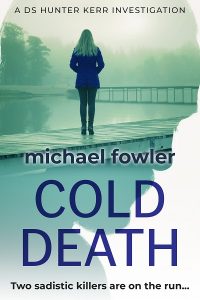
I am working on a new character who is a forensic psychologist in a psychological thriller, which is a huge shift for me as my previous novels are police procedurals.
What is your favourite book?
I am such an avid reader I don’t have a favourite book or character. However, there are a few recent reads that stand out among others, and they are: Into the Darkest Corner by Elizabeth Haynes; The Dry by Jane Harper; Her Every Fear by Peter Swanson; Fall from Grace by Tim Weaver, plus The Bone Field by Simon Kernick.
Which book do you wish you had written?
The Bone Collector by Jeffery Deaver – I love the unique element of a paraplegic crime scene examiner detecting a crime from his bed.
Tell us something surprising about you!
I am also an established artist. I have exhibited in London’s Mall Gallery with The Society of Marine Artists, The Society of Oil Painters and the British Federation of Artists. In 2009 I was awarded the SAA Professional Artist of the Year.
Michael Fowler is the author of the DS HUNTER KERR INVESTIGATIONS series.
Click here to order HEART OF THE DEMON – the first book in the series – now!
COLD DEATH – the second book in the series – is available to pre-order.
Happy new year to all of our wonderful authors and readers, and thank you for your continued faith and support! 2019 saw us expand our list with some incredible titles and we can’t wait to share more with you this year.
Here’s what to expect from 2020:
We will soon launch our non-fiction list, led by Sapere co-founder Richard Simpson. Richard is on the lookout for military history titles – backlist in particular – and aims to launch the first few books on our second anniversary in March.
Our ‘call for nautical fiction’ has been successful and we will soon be releasing Irving A. Greenfield’s Depth Force series – thrilling submarine adventures set in the 90s, as well as the first in a series of Second World War naval thrillers by Justin Fox, and a trilogy of Tudor nautical adventure books by David Field.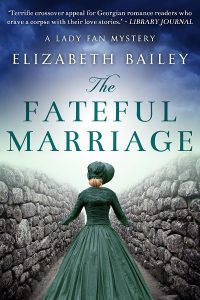
We also have plenty of exciting new projects from our current authors, so look out for the next books in the series you already love! These include the final instalment of Alexandra Walsh’s Marquess House Trilogy; the next ghostly adventure in Linda Stratmann’s Mina Scarletti series; a new Lady Fan regency mystery from Elizabeth Bailey and a return of Charles Dickens as private investigator in J C Briggs’ Victorian series.
We also have brand new authors launching next year and plenty more fan favourites! Make sure you sign up to our newsletter to stay up to date with our latest releases and monthly deals.
Renowned for her wit, humour, realism and sparkling dialogue, Jane Austen is hailed as one of England’s greatest writers. To celebrate her birthday (16 December 1775), we asked three of our Regency romance authors to tell us what her work means to them and how it has influenced their own writing.
Elizabeth Bailey, author of the Brides By Chance series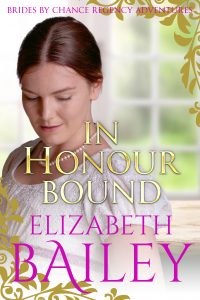
When I first read Pride and Prejudice, I was already educated to a degree on the period by an addiction to the works of Georgette Heyer. It was a revelation reading a novel contemporary to the era. The style was different, uncluttered by period description, Austen assuming that knowledge in her readers not necessarily available to the 20th century eye. Yet the detailed descriptions of the lives she depicts gave me a rich understanding of the thinking and mores of the day, and her dry humour and insights into humanity’s foibles made me realise that people don’t change very much. The same emotional dilemmas beset the human heart, regardless of the time in which they may be living. The trappings may be different, the moral values tighter or looser, but essentially the human condition remains constant. An invaluable lesson for a writer.
Or find out more about the Brides By Chance series here.
Valerie Holmes, author of The Yorkshire Saga
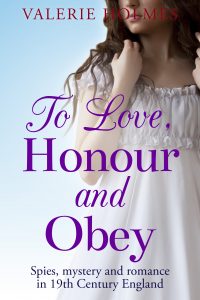 My work was strongly influenced by Jane Austen’s novels, which are as refreshing today as they were when she wrote them. Social realism and romantic comedy blend subtly to provide moral lessons on life as she saw it: she could have coined the phrase ‘show, don’t tell’.
My work was strongly influenced by Jane Austen’s novels, which are as refreshing today as they were when she wrote them. Social realism and romantic comedy blend subtly to provide moral lessons on life as she saw it: she could have coined the phrase ‘show, don’t tell’.
In 1775, Jane, a lively rector’s daughter was born into a world that restricted women by gender, social strata, the control of male relatives and wealth or a lack of it. Jane described Regency, but did not glorify fashionable finery, wealth, social meetings or snobbery — deliberate or unintentional.
Whether master or servant she wanted people to be unselfish, just and to be aware of the dangers of making quick and personal judgements.
Jane revealed the failings of would-be lovers, but also their ability to change. The resulting memorable novels have happy, hopeful endings.
Order TO LOVE, HONOUR AND OBEY here.
Or find out more about The Yorkshire Saga here.
Natalie Kleinman, author of The Reluctant Bride (forthcoming)
I couldn’t honestly tell you when Jane Austen first came into my life but, when she did, she came to stay. As with any society, there is good and there is bad, the haves and the have nots, but as a reader and a lover of romantic fiction I want to be whisked away to a time and place where I can remove myself from the mundane to a world of fashion, excitement and yes, romance, and that’s what her books do for me. Not that Miss Austen is universally kind to her cast of characters, but isn’t that what makes them seem so real? She has a talent that makes them leap from the page.
The films and TV productions that depict her work have only added to my enjoyment with their amazing sets and beautiful costumes. So on this day, her birthday, I would like to thank her for the abundance of pleasure she has given me over so many years.
Natalie’s Regency romances are forthcoming in 2020 and will feature spirited heroines, determined to succeed against the odds.
Featured image credit: Photo by Elaine Howlin on Unsplash.
Hi Keith. Welcome to the Sapere Books blog!
Can you tell us a little bit about what first inspired you to write the Torquil McKinnon Investigations?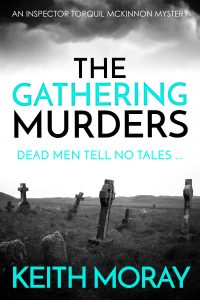
Well, I have been a crime fiction reader most of my life and always wanted to be a crime writer. I began writing children’s stories for The People’s Friend when I was a medical student at the University of Dundee. Then when I qualified, I wrote for the Kingston-upon-Hull’s dial-a-bedtime story service, until I had to give it up and focus on my medical practice. One of my forebears was a piper, and I thought that if I ever did write a crime novel it would have a piper in it. The germ of an idea was there.
A few years later I started having bagpipe lessons from a good friend and golf partner, who happened to be a retired pipe major. So, actually playing the pipes seemed to germinate the idea. Then we went on a family holiday to Tobermory in Mull and the whole thing seemed to unfold before me. A remote Outer Hebridean island with a primitive golf course and the smallest police force in the country, the Hebridean Constabulary. The ingredients were there, it just took a visit to a Highland Gathering on the mainland and I started to plot The Gathering Murders. The characters grew on me and the series just developed.
What was your reason for creating the fictional island of West Uist instead of choosing a real Scottish location?
I suppose I just fell into it. I had written several westerns long before I ever went to the USA, so I just started writing, amalgamating my own memories into my own wee island in much the same way that I had created towns and counties in the Southwest of America. I wanted West Uist to be Scotland in miniature. This is why the terrain varies, there is a great variety of surnames (far greater than in the Outer Hebrides) and I have introduced a different theme with each novel.
What are your typical writing habits? Do you work on a set schedule each day? Do you plan thoroughly before you begin writing?
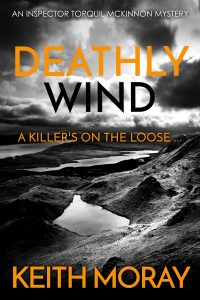 I am an opportunistic writer, so I write when I have done all of my essential chores for the day, such as looking after my small practice. I am also a medical journalist and have a written a weekly column in the local newspaper for 38 years, so I can identify with Calum Steele, the editor of the West Uist Chronicle. Because I used to write short children’s stories and now write a newspaper column, I tend to write in short segments. It has become part of my writing psyche. This suits my opportunistic method of working.
I am an opportunistic writer, so I write when I have done all of my essential chores for the day, such as looking after my small practice. I am also a medical journalist and have a written a weekly column in the local newspaper for 38 years, so I can identify with Calum Steele, the editor of the West Uist Chronicle. Because I used to write short children’s stories and now write a newspaper column, I tend to write in short segments. It has become part of my writing psyche. This suits my opportunistic method of working.
I carry a notebook everywhere and am forever jotting snippets down, to be incorporated later. I plot late at night in longhand. When I am actually writing then it will be on the computer, and that can be literally any part of the day.
I do plan it out and have never felt brave enough to just type and see where the story goes. I have a method of writing a novel that seems to work for me. A crime novel has so many elements to it: main plot, subplots, clues and red herrings. I work out each chapter and have a fair idea of what has to happen in each one.
What part of the writing process do you find most difficult?
Plotting is never easy. I go around asking myself ‘what if?’ That’s why I need my notebook handy. I would say it is 80 per cent of the work in writing the novel.
When I am working on the plot, I often play the pipes like Torquil (except he is a virtuoso and I am so abysmal that I am forbidden from playing if there is anyone else in the house). And I also putt golf balls across the landing into my study or chip balls onto the settee. Strangely enough, it facilitates ideas.
In terms of the visceral structure of the novel when I actually write, the middle part is the hardest for me. The first part is scene setting, putting people in the right places and ensuring that the crime happens early on. The middle part is about planting the clues, the red herrings and keeping the subplots going without letting them take over. The end part I already know what should happen, so the middle is about ensuring that you have put everything in place so that you can build it up for the final denouement.
Do you always know ‘who done it’ before you start drafting each novel?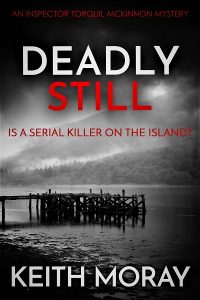
Yes, in virtually all of my books I know who, where, when and how. But, I have to admit that I have on one occasion changed my mind while well into the story. It seemed to work, but I’m saying no more!
The sixth book in the series is due out soon – will that be the end for Torquil, or do you have ideas for more mysteries?
Gosh, I am honestly not sure. I would like to think there will be more, but I am working on other projects at the moment, which I am excited about. Torquil may not have finished with me yet.
And finally – tell us something surprising about yourself!
One of my hobbies is conjuring and I am a paid up member of the International Brotherhood of Magicians.
Click here for more information on Keith Moray’s Torquil McKinnon Investigations series.
THE DEADLY STILL, book five in the series, is available to preorder now.
David Field is the author of The Tudor Saga Series. The Queen In Waiting is the fifth book in the series.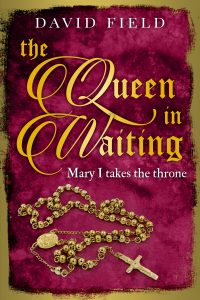
There were many victims during that turbulent period in English history that we call the Tudor era, and not all of them were obvious. ‘Popular’ history has a habit of creating fixed mental images of those who lived their lives in the maelstrom of Tudor Court politics, and it’s only when you examine the actual facts that the doubts begin to creep in. A prime example of a Tudor ‘identity’ whose place in the ‘fake news’ of the period has set her character in concrete is Mary Tudor, the only child of Henry VIII and his first – and longest lasting – Queen, Katherine of Aragon. Mention Mary and the word ‘Bloody’ appears like magic before her name, conjured up by usage and with little regard to the circumstances that led her to burn Protestants at the stake.
Mary was born in February 1516, the only surviving child from her mother Katherine’s long and miserable litany of stillbirths and miscarriages. Katherine may well have suffered from gynaecological problems that Mary inherited, because Mary is recorded as having endured menstrual disorders as a young woman. These were no doubt the early warnings of the phantom pregnancies and uterine blockages that would deny her issue of her own, and lead ultimately to her death.
But in her very early years we are given a picture of a rosy-cheeked, chuckling little infant with her father’s distinctive red hair being bounced gleefully on Henry’s knee as he resolutely hid from the world his inner torment that Mary was not a boy. His obsession with begetting a male heir, more perhaps than any natural lust for Anne Boleyn, led to Katherine’s eclipse, and as she entered puberty Mary was forced to watch from very distant sidelines as her beloved mother suffered the public humiliation of the annulment of her marriage to Henry, and her replacement on the throne by ‘the night crow’ Anne Boleyn. Anne completed the insult by giving birth, in almost indecent haste, to Mary’s half-sister Elizabeth.

Mary Tudor
Humiliation was piled on humiliation as Mary was declared a bastard, and her place in the succession was taken by Elizabeth. The newly demoted ‘Lady Mary’ was stripped of her own former household and sent to live with Elizabeth in Hatfield House, Hertfordshire, denied access to her mother Katherine, who pined her way to a heartbroken death in a remote castle in Cambridgeshire. Mary was reported to have been ‘inconsolable’ at her mother’s death, and suffered from unspecified illnesses for several years during which she was estranged from her father.
The execution of Anne Boleyn and the bastardisation of Elizabeth would have been of little comfort to Mary once Henry’s new wife Jane Seymour gave birth to the heir apparent Edward, who, under the baleful influence of the Seymours who governed the nation as part of his Regency Council, proved to be far more aggressively Protestant than his late father, while Mary was equally determined to both pursue and promote the Catholic religion of her late mother. The two never saw eye to eye, and during a disastrous attempt at reconciliation during the Christmas of 1550, the thirty-four year old Mary was reduced to tears when rebuked by her thirteen year old half-brother, in front of the entire Court, for her fervent adherence to her faith.
The death of Edward was probably the greatest catalyst for Mary’s subsequent actions. It was learned that in his fear that England would slide back into Catholicism should Mary become Queen, Edward had bequeathed the throne to their distant cousin Jane Grey, from an obscure Leicestershire offshoot of the wider Tudor family. Not only that, but the Council of State initially supported Jane, and Mary was obliged to claim her throne by superior force of arms.
She was now 37, beyond the customary ‘sell by’ date of Tudor women, unmarried, childless, and suffering from gynaecological issues. She was probably both flattered and relieved to receive an offer of marriage from her second cousin Philip of Spain. There seems to be little doubt that for him it was a marriage of greed, furthering his ambition to rule most of Europe, but for Mary it seems to have been a love match. Then history repeated itself through a phantom pregnancy and a terrible slow decline with what may well have been ovarian cancer. One can only feel desperately sorry for the lonely old woman on her death bed when one reads that, on learning of Mary’s demise, Philip wrote to his sister that “I felt a reasonable regret for her death.”
Is it surprising that Mary Tudor was hardly a bundle of laughs during her lifetime? Her mother was publicly humiliated, she herself was bastardised by her loving father, her half brother ridiculed her faith, her Council of State preferred a country girl over her as Queen, and her younger sister was prettier, more socially accomplished, and more loved by the people, while her husband regarded sexual relations between them as some sort of public duty. Add to that her almost permanent ill-health, and it is difficult not to reach behind the public persona she left behind in order to give her a consoling cuddle.
In the latest novel in my Tudor series, The Queen in Waiting, I chose to depict the reign of Mary through the eyes of Elizabeth, another victim of their times. I could only describe the events of Elizabeth’s life through the actions of Mary, and they were harsh when considered without regard to the events that forged them. Sinned against or sinning? Your choice.
Order THE QUEEN IN WAITING here.
Or find out more about The Tudor Saga Series here.
Image credit: Portrait of Mary I of England and Ireland by Hans Eworth. (Public domain).
Simon Michael is the author of the Charles Holborne Legal Thrillers, set in the 1960s. The Waxwork Corpse is Book Five in the series.
Like all the books in the series, The Waxwork Corpse is based on real events and real cases but this one you may remember, because it made the headlines.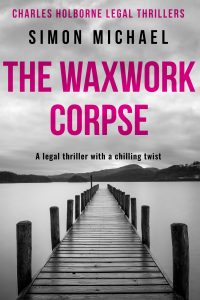
In 1984 a man was arrested in connection with the death of his wife, a body having been found in Wastwater, the deepest lake in England, almost a decade after she went missing, supposedly with her lover.
I learned of the case while waiting in a barristers’ robing room for a jury to return with a verdict. How the killer had dropped the body tied to a kerbstone, in the middle of the night, from an inflatable dinghy into the dark waters of Wastwater. How it had, in a one in a million mischance, landed on the ledge of an underwater pinnacle named Tiffin’s Rock. How, in another extraordinary twist of fate, the ledge was at the perfect depth for the water temperature to preserve the body (the tissues had become “adipose”, wax-like, and so remained recognisable so many years later). And how, extraordinarily, the police happened to be looking for a missing young woman in the same area shortly after an amateur diver first saw the body underwater.
It would, I knew, make a wonderful story, and some years later, following the killer’s conviction for manslaughter and his discharge from prison, I got in touch with his solicitors. Did they think the man would allow me to interview him with a view to writing the story, I asked? They replied in the affirmative and, to my complete astonishment, sent me the case papers, witness statements, photographs, pathology and scientific reports — the complete file.
By then the man was out of prison, running a small B&B in a remote part of England. I got in touch and asked if I could come to interview him, and he agreed. Perhaps rather thoughtlessly in retrospect, I decided that the trip offered the perfect opportunity to take my wife and new-born daughter for a short break away from London.
The plan was to drive from London on Friday afternoon and spend the weekend at the B&B. My wife could walk on the beach while I conducted the interview. However, what nobody predicted, including The Met Office, was that one of the worst storms of the century was due to strike Britain that day.
By dusk, tall vehicles on the motorway in front of us were blowing over. Power lines were brought down by uprooted trees, huge swathes of the countryside were plunged into complete darkness as the electricity supply failed and torrential rain was hurled from the skies. Traffic was guided off the motorway and down narrow country lanes, at one point even being directed over waterlogged fields.
We finally arrived at our destination, a small seaside town, several hours late and in pitch darkness. It was still pouring, the fierce winds howling through the deserted streets and whipping the rain almost horizontal. There was no electricity; even the traffic lights were out.
Eventually, we found the address. We climbed out of the car and, immediately drenched, stepped over dislodged branches and other detritus and ran up the path to the front door. We were exhausted and irritable, with a baby who’d been inconsolable for hours.
I knocked on what we hoped was our host’s front door. At first there was no answer, but then a flickering light swayed down the hallway towards the door. A huge shadow darkened the glass, and the door was opened by an extremely tall man holding a storm lantern.
It was a scene straight out of a horror movie. He offered us hot drinks but my wife, completely spooked by then, insisted we went straight to bed. We climbed the narrow stairs, tired and famished, and entered our dark bedroom. My wife barred the door with a chair.
The next day, the weather was improved and the power restored. I asked my questions about the case and the evidence and the killer’s motivation, while my wife took the baby for a walk on the beach. The interview went well, and it was agreed that I could use the story as long as the man’s identity was obscured to protect his children.
Halfway through I realised that the man sitting opposite me was admitting, completely calmly, that he killed his wife in a fit of uncontrolled anger.
That afternoon I reported some of what I was told to my wife. As I repeated the story and saw the growing horror on her face, it dawned on me that staying for the weekend in an isolated B&B with a man possessing such an uncontrolled temper that he could kill his wife with his bare hands, no longer seemed like such a good idea.
We left that afternoon.
If you want to find out what the killer’s real motivation was, and whether or not he was actually guilty of murder, you’ll have to read The Waxwork Corpse!
Order THE WAXWORK CORPSE here.
Or find out more about the Charles Holborne series here.
Graham Brack is the author of the JOSEF SLONSKÝ INVESTIGATIONS series.
When I started writing the book that became Lying and Dying, I didn’t have a detective in mind. There would have to be one, of course, and because I wanted it to be realistic he would have to be part of a team, but the character of Slonský was not central to my thinking.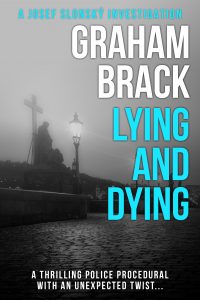
I can remember precisely when he appeared. My brother and I were at the National Theatre; during the interval I described the story, and together we arrived at the notion that a senior Czech detective must have worked under Communism and would therefore probably have some skeletons in his closet. Moreover, everyone he knew would have similar problems, so it would be understandable if he had little or no respect for anyone of his own vintage.
The world-weary detective is a lazy trope, so I made Slonský enthusiastic about his work. He loves his job. He believes it matters, and he has no patience with corrupt colleagues. And then it came to me that the biography I had proposed for him, in which he spent around half his career under Communism, and half after it, meant he must be coming up to retirement. That provided a rich vein of character analysis, because he dreads retirement; there is nothing else in his life, so he wants to go on as long as he can, and the fact that his bosses know that gives them the only hold they have over him.
Thus, Captain Lukas is able to get him to take a trainee officer, Jan Navrátil. Slonský has had partners before, but they quickly apply for transfers. Navrátil can’t do that. He is a fast-tracked police academy officer with a law degree, fierce intelligence, a strict moral code and an open and trusting nature. Slonský comes to realise that Navrátil is incorruptible and probably always will be, and that when he is gone Navrátil has the potential to reach the very top of the tree – provided he listens to Slonský’s sage advice. Shaping Navrátil’s police career will give Slonský the nearest thing he can have to a legacy. Later they are joined by a woman officer, Kristýna Peiperová, who doesn’t have a law degree but balances that by knowing much more about how the world works. Slonský enjoys training her too, and he honestly does not know which of them will get the top job first, but he doesn’t care. Male or female doesn’t matter; all he wants is someone who can bring about the clean, efficient police force he wanted to join.
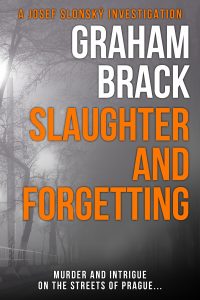 I sat down to write one Saturday morning, and after a page or so the police car pulled up and Slonský climbed out. Battered, inelegant, disinclined to waste any effort, cunning, cynical and sharp-tongued, he appeared in my mind’s eye and somehow took over. A story in which he was a necessary figure but not the star was seized and made into a section of his biography. Whenever he walked into a scene, it livened up, and I found if I just listened to him he told me so much about himself.
I sat down to write one Saturday morning, and after a page or so the police car pulled up and Slonský climbed out. Battered, inelegant, disinclined to waste any effort, cunning, cynical and sharp-tongued, he appeared in my mind’s eye and somehow took over. A story in which he was a necessary figure but not the star was seized and made into a section of his biography. Whenever he walked into a scene, it livened up, and I found if I just listened to him he told me so much about himself.
He doesn’t eat well, but he eats a lot. He is a typical Czech, he believes, devoted to beer and sausages. He lives in a dingy one-room flat, so he spends most evenings in bars. He was married, but his wife left him, and he took it for granted that they were divorced, which proved not to be the case. He believes that nobody can work on an empty stomach, that you should never miss a chance to eat or pee (because you don’t know when the next one will come) and that not everything about the old days was bad.
His name was derived from the Czech word slon, meaning elephant. It seemed appropriate, given his size and his memory, and it was gratifyingly similar to the Czech surname Slánský.
After Lying and Dying was published, a woman wrote to me to say that Slonský was appallingly non-PC in his language but his instincts were good; he was meticulously fair, and therefore free from prejudices such as sexism and racism; and, she said, while she wouldn’t invite him to dinner, if she were ever murdered she would want him to be investigating her death. I think he would allow himself a smile if he heard that.
Click here to order LYING AND DYING now!
We have a range of hair-raising titles to help you get your fear fix this Halloween! Read on to find out more about some of our spookiest stories…
Werewolf is an atmospheric urban thriller set in post-WWII Germany. While running a police training school as part of the government’s denazification policy, Scotland Yard’s Detective Silas Payne is pulled into a grisly mystery. Two corpses are found in a requisitioned house, and another man is soon killed – this time a British soldier. Everyone blames the ‘werewolves’, a dangerous Nazi resistance force. But Silas believes that a new, depraved serial killer might be at large…
 Heart of the Demon, Michael Fowler
Heart of the Demon, Michael Fowler
When Yorkshire is terrorized by a deranged murderer, Detective Sergeant Hunter Kerr steps in to unravel the gruesome plot. A fourteen year-old-girl has been brutally slaughtered, and a bloody playing card has been left beside her body. As his investigation proceeds, Kerr makes another shocking discovery: the mummified remains of a teenage girl, seemingly killed in the same ritualistic fashion. Since the murders were committed more than a decade apart, it seems that the killer is biding their time. And it’s up to Kerr to untangle their deadly game before they strike again…
Mr Scarletti’s Ghost, Linda Stratmann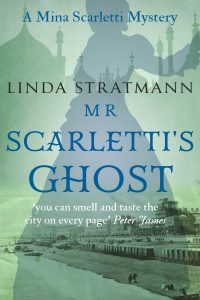
In Victorian Brighton, those desperate to communicate with their lost loved ones are rushing to psychics and mediums. But local author Mina Scarletti is sceptical, believing psychics to be unscrupulous fortune hunters. However, at her mother’s insistence, she takes part in a séance in an attempt to reach her recently deceased father. Still doubtful, Mina decides to investigate the spiritualist – the revered Miss Eustace. But will Mina be able to expose her as a fraudster? Or will Mr Scarletti’s ghost return from the grave…?
In 1963, a boy is abducted and killed in the French countryside. A man is convicted of the murder, but young policeman, Dominic Fornier, is convinced that they have caught the wrong person. In London 30 years later, a boy loses his parents in a car accident and is left in a coma. And when he wakes, he is haunted by strange dreams of a past that isn’t his. When Fornier hears of a possible link between the two boys, he plunges into a desperate race against time to catch a vicious killer and right the wrongs of the past…
Kim Fleet is the author of the Eden Grey Mystery Series, coming soon from Sapere Books.
Hi Kim! Welcome to the Sapere Books Blog!
What first got you into writing?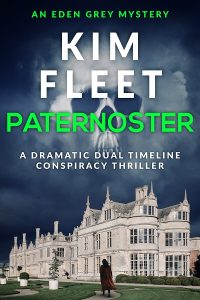
I started writing when I was 9. My dad gave me a book called Write Your Own Novel. It was the first time I’d make the connection that the books I loved reading were written by real people, and I thought I’d like to have a go. Dad also gave me a hardback notebook with beautiful marbled endpapers to write in. I filled it with large, round writing; enormous speech marks; and classic lines of dialogue such as, “Hello, Queen Elizabeth the First, would you like a cup of tea?”
What are your typical writing habits?
All my planning is done longhand. I write out character lists, character portraits, and scene outlines with just enough information to get writing but with enough space for the story to grow on its own. I also draw maps of places and maps of connections between characters: this shows me instantly whether I’ve got enough material for a full novel or if I need to come up with another subplot. It helps to avoid the dreaded soggy bit at 30,000 words in. I do a lot of the planning in cafes as I like the buzz of people around me (and the cake). When it comes to writing, though, I use a laptop and sit up in bed to write with the radio on in the background. It’s terrible for my back but does mean I eat less cake.
What part of the writing process do you find most difficult?
The first three chapters are always a nightmare, mostly because I’m still feeling my way into the novel and don’t know the characters fully yet. Those chapters will be rewritten time and time again. Once I got 30,000 words into a novel, realised I’d got the wrong character as the murderer, and had to scrap the whole thing and start again.
How much research do you do?
Every novel requires some research, whether it’s on places, historical detail, or forensic procedures. Research is so absorbing it’s easy to get lost in it, so I discipline myself to do enough to feel confident to start writing and no more. During the writing process, if I realise I need to research something, I write it on the manuscript and come back to it once I’ve got a complete first draft.
Do you ever find your characters controlling their storylines?
Absolutely. The characters become incredibly real, not only when I’m writing but during ‘normal’ life, too! I often have a voice chuntering in my head as I walk round the supermarket or when I’m gardening. In recent years, in addition to hearing characters I’ve started to be physically touched by them, too. It sounds bonkers, but sometimes when I’m in the car I can feel my character’s knees poking into my back. I think I need to create characters who are a bit shorter.
Do you ever feel guilty about killing off characters?
It’s very hard to kill off some characters, but I think that’s necessary to the story. In crime, there has to be something at stake, an offence against society that we care about and want the sleuth to avenge or solve. If I don’t care who dies, if it doesn’t hurt me while I’m writing, then there’s no power in the set-up and nothing for the sleuth to put right.
Do you find it hard to know when to end a story?
All the time. I either stop too soon or drivel on for too long!
Which book do you wish you had written?
Red Joan by Jennie Rooney. It’s a crackingly good read. It’s the book I always recommend to friends when they say they don’t know what to read next.
Tell us something surprising about you!
I can sing ‘Three Blind Mice’ in the Aboriginal language of Pitjantjatjara.
Paternoster, the first book in the EDEN GREY MYSTERY SERIES is available to pre-order now.
Chapter One – 1891
When pathologist Jacob Bryce got to the third stab wound, he knew that it was not one of the ordinary back-alley robberies which constituted most of the murders in New York City’s notorious 4th Ward.
Most of the blood, concentrated around the woman’s chest and stomach, had coagulated into a thick skin, indicating that death had taken place several hours beforehand. Bryce had to use alcohol to clean and loosen the blood in order to view those first puncture wounds.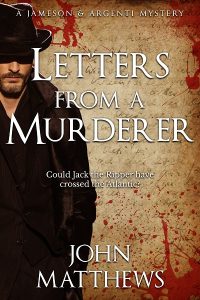
It was the practice at Bellevue hospital that whenever a body was brought in for autopsy one of the crime-scene detectives should also be present to pass on key information when queried. Bryce looked towards the attending detective, whose name he couldn’t recall and who still looked somewhat in shock.
‘What time did you first discover the body?’
‘Uh, we got there, myself and a colleague from Mulberry Street, at just before midnight.’
‘And the first people to discover the body — when might that have been?’
The detective briefly consulted his notes. ‘Another girl from the Riverway Hotel first noticed her in a side-alley forty minutes before we arrived.’
‘Much activity in the area that time of night?’
‘Yes. Quite busy still.’
Bryce nodded thoughtfully. Add on at most half an hour for her body to first be discovered then the two hours since midnight taken up with initial forensics at the crime-scene and transporting the body in an ambulance-wagon to Bellevue.
The deep gash to the side of the woman’s neck, severing the carotid artery, wouldn’t on its own have been unusual for a street robbery; it was the fact that it was combined with so many stab wounds — Bryce had counted eight so far. Blood flow from the neck-wound was less, indicating that the stomach wounds had come first.
By the time Bryce had located the fourteenth stab wound, he realized he was in unchartered waters; it was like nothing he’d seen before. The smell of body waste mixed with carbolic and alcohol was heavy in the air. The young detective was now even more wide-eyed and looked slightly nauseous, one hand going to his mouth.
Bryce noticed a small X marked on the woman’s left shoulder. He’d get a photo taken of it later. A keen follower of Virchow’s principal, Bryce had a neat line of glass jars prepared and labelled, ready — once they’d been initially examined and weighed — to take each of the body’s internal organs. But he soon discovered that two of those jars would go unfilled. He looked towards the detective.
‘Were any body parts removed from the scene? Perhaps bagged and taken elsewhere for examination … or inadvertently left at the crime scene?’
The detective looked flustered. ‘No. None that I know of.’
‘The scene was searched thoroughly — nothing left there?’
‘Yes. I’m sure it was.’
Bryce wondered whether the scavenging rats and dogs of the area might have run off with the woman’s liver and kidney. Half an hour? Unlikely in such a short period, but regardless the killer had first removed those organs. Yes, like nothing he’d seen before — although he had heard of something similar.
Bryce looked at the clock on the wall. Five hours before Inspector McCluskey was in his office for him to pass on the information.
‘Come now. This Darwin fellow was clearly deranged.’ Viscount Linhurst swirled his brandy balloon at London’s St James Club. ‘Evolved from monkeys? We’re clearly the far higher species.’ With a captive audience of two of London’s leading surgeons — Sir Thomas Colby and Andrew Maitland — he thought it an apt time to air such views.
‘You’d never guess it from any of my household staff,’ Maitland commented.
There was a light guffaw from Linhurst, but Colby remained serious. ‘I don’t know. I see the similarities daily in autopsies. Every single organ in the same place — liver, stomach, spleen — and every bone and joint the same, too, right down to the little finger.’ Colby held up a pinkie. ‘I wouldn’t discount it so hastily if I were you.’
‘I’m not convinced.’ Linhurst tapped his forehead. ‘It’s all here, you see. And Darwin hasn’t adequately explained how a monkey could possibly —’ Linhurst broke off as a club usher approached.
‘I apologize for the intrusion, gentleman, but there’s an urgent call for Sir Thomas.’
Colby unfolded the note held out on a silver tray. ‘Sorry. Excuse me a moment.’
He followed the usher towards the vestibule call booth and at the other end Police Commissioner Grayling wasted little time with preamble.
‘There’s been another one.’ Silence. Grayling wasn’t sure if it was purely shock or Colby hadn’t immediately made the link. He added: ‘Similar to the other eight.’
‘Where? Whitechapel again?’
‘No. You’d hardly credit it when I tell you. It’s across the sea: New York.’
But Colby wasn’t that surprised. With the last murder more than a year ago now the supposition was either that the Ripper was imprisoned, dead, or had moved on.
‘Who is handling the investigation there?’
‘McCluskey.’ Octave lower, derisory. ‘But, no matter — you’ll need to go over as soon as possible.’
‘I see. I hazard he didn’t request my involvement.’
‘No. I did. Your contribution is invaluable to match the crimes. There’s also the possibility that it’s a copycat murder: as you’re well aware there has been far more in the press about this than we’d have liked. But if a link is proven we still have by far the heavier case burden: eight murders that remain unsolved.’
Colby didn’t need reminding: three years that had consumed his life like never before. The number of murders attributed to the Ripper ranged from five to as many as eleven, but eight was the number Colby had personally cited as having links. No past investigation had attracted such strong public furore and a Fleet Street eager for fresh readers hadn’t helped.
‘There was also a mark left on this one,’ Grayling said. ‘A small X on her left shoulder.’
‘Oh?’
‘It might be significant, it might not. Or indeed, it might mean that this is a different man entirely: not the Ripper at all. We won’t know until we get the full details.’
‘Yes, I see.’ Colby sighed. ‘One problem, though. I have an important speech at the Royal College of Surgeons in two weeks time that I must be here for. I won’t be able to go until after that.’
‘I’m not sure matters will hold that long — aside from the politics. McCluskey would no doubt start bleating about our incompetence again. Can’t you delay it — speak there later?’
‘No, it’s an annual event. But that’s not the only problem.’ The rest of Colby’s hectic social calendar flooded in: his son’s upcoming investiture at Sandhurst, a dinner-dance invitation from Lord and Lady Northbrook that he’d face untold woe from his wife for missing. ‘I fear I’m not going to be able to go over.’
‘I’m sorry to hear that. I suppose I’ll just have to tell McCluskey the bad news — or probably good from his point of view. He’ll be relieved no doubt that we aren’t interfering, as well as now have first-hand proof of that incomp—’
‘I have a suggestion,’ Colby cut in. The thought had struck as Grayling started riding him. ‘One of my best students went over to New York four months ago. An aunt who he was close to — she raised him after his mother died — was very ill. He could stand in for me.’
‘But would he be competent enough?’
‘Very much so. My main protégée, you could say. Of all my students, he was the only one to identify crucial links in the Ripper case without my constant prompting. Uncanny — almost as if he knew the man personally.’
‘I see.’
‘And, of course, I could give him added consultation by telegram and letter from London.’
‘Yes, I suppose it could work,’ Grayling said at length. ‘But if he’s picked up on any of the scuttlebutt in London, tell him not to use our pet-term, Inspector McClumsy — get us off on the wrong foot. And what’s his name, by the way?’
Colby swallowed back a chuckle. ‘Jameson. Finley Jameson.’
‘Mr Jameson… Mr Jameson!’
The voice had a slight echo, as if it was at the end of a tunnel, and it took Finley Jameson a moment to focus on the wizened Chinaman hovering over him and realize where he was. The smell of opium smoke and incense was heavy and Jameson wasn’t sure if the mist was just in the air or behind his eyes.
‘Mr Jameson… Lawrence is here. Says he has an urgent message for you. Shall I show him in?’
That snapped Jameson to. He sat up, rubbing his head. Years back in his university days, he’d had a shock of wavy, wild blond hair, but now, cropped short, it looked much darker.
‘No … tell him to wait. I’ll be out in a few minutes.’ He didn’t want his assistant, Lawrence, to see him like this. He wouldn’t understand.
‘Do you want me to get Sulee to bring you some tea? Help you waken?’
‘Yes … thank you. An excellent suggestion.’
Sulee, more distant through the mist, gave a small bow as she went to make him tea. Her lithe beauty was apparent despite the plain high-collar shirt and loose trousers of any laundry worker.
He recalled Ling offering for a dollar that Sulee give him a scented oil massage while he smoked; for another dollar she’d apply the oil with her naked body and then lick it off inch by inch ‘like a cat’.
Jameson thought he’d politely declined, but when later he seemed to remember Sulee’s oiled body writhing against him, he wasn’t so sure. Then halfway through her eyes became vertical ovals and her skin transformed to that of a tiger’s, complete with stripes — unless it was the candlelight throwing shadows through a nearby palm — so perhaps it had been a dream after all.
The main thing to attract Jameson to these dens was that wonderful merging between dreams and reality. But was death always what triggered his visits? Certainly, the first time he’d visited one had been not long after his mother’s death and it couldn’t be sheer coincidence that his visits since had often been following his and Colby’s most traumatic autopsies. Now, too, this visit to Ling’s had come straight after his aunt’s death and often his past visits to dens had taken place when other problems had arisen in his life. Was he escaping personal demons or merely enjoying a harmless ethereal distraction? After a moment, he shrugged the thought away. As often, he found himself more at ease studying the intricacies of the lives of others than his own.
Compelled to keep reading? Buy Letters from a Murderer now!
Patricia Caliskan is the author of two romantic comedies: Awful By Comparison and Girlfriend, Interrupted.
Hi Patricia! Welcome to the Sapere Books blog!
Can you tell us a bit about what first got you into writing?
I wrote stories from about the age of six. I collected stationery, pens and pencils, and spent hours at my miniature desk, making ‘books’ for the family. Beverley Cleary’s Ramona series was a huge inspiration to me as a little girl.
What does your typical ‘writer’s day’ look like?
A typical writing day looks like writing through the night. I’ve always been slightly nocturnal; that’s when I get most of my ideas and can be totally focused. I have a 4 a.m. cut-off and wake up completely zooped to read and edit the work. I have a few places I gravitate towards throughout the house. My latest project is basically happening in the kitchen, so there’s been a lot of snack breaks with this one.
I drink coffee on-tap and usually have a playlist on the go. No rituals as such, but candles signify ‘writing time’. That’s about as ceremonial as I get.
What part of the writing process do you find most difficult?
My challenge seems to be plotting from about three-quarters of the way through to the ending. It’s incredibly exciting to start a project, and I know how each story ends – until I begin writing. The characters and storylines naturally evolve, so my plotlines tend to evolve too. It’s a bit like using Sat Nav. I know my destination, but don’t always take the most straightforward route.
Do you find it hard to know when to end a story?
Absolutely not! There’s nothing like typing ‘The End’ after I’m 100% satisfied I’ve tied up every strand of the story, and done the best work I can for the reader. It’s the best feeling.
How much research do you do?
There’s research involved in every book. Luckily, it’s one of the reasons I enjoy the process. The character of Lara in Awful by Comparison was based on reports ahead of the #metoo movement, and Gia Carangi in particular. The subject of step-parenting in Girlfriend, Interrupted was something I personally experienced, but I visited online forums to make the dynamic as relatable as possible. I’m currently learning about the psychological effects of being widowed, and floristry, so you could say it’s pretty varied.
How real do your characters become and do they ever seem to control their own storyline?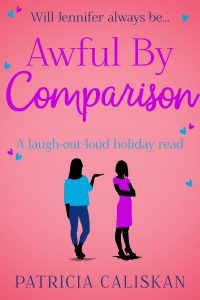
My characters absolutely dictate their fate. Their voices can become very different to how I initially heard them. Listening to certain nuances and spending time with them, they’re full of surprises. It’s kind of like developing a friendship, really. My understanding of them deepens over the course of the novel.
What are you working on at the moment?
I’m currently working on my third novel. It has an ever-changing title, but I can say with certainty that it’s set in the fictitious address of Arkin Avenue, and tells the stories of a great bunch of characters. I hope you’re going to love them.
Which book do you wish you had written?
As she’s fresh in my mind, The Private Lives of Pippa Lee. It was one of those books which made me happy, simply because the character existed. I thought it said a lot about the shifting roles we occupy throughout our lives.
Tell us something surprising about you!
Duran Duran have been my favourite band for nearly 35 years. If you take another look, you’ll find them mentioned in all of my books so far!
On Saturday we had our semi-annual author meet-up in London, where we had a chance to catch up with our wonderful writers over drinks and nibbles, as well as finding out what their next big projects are. Here is a taster of what’s to come:
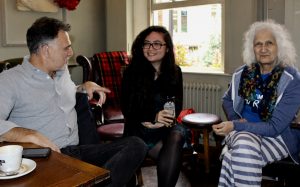
Simon Michael, Natalie Linh Bolderston and Elizabeth Bailey
Elizabeth Bailey has more dazzling Regency romances and murder mysteries in the pipeline with new Brides By Chance and Lady Fan novels coming our way.
Graham Brack has handed in the final instalment of his thrilling Josef Slonský Investigation series, and will be launching a new historical crime series next year.
We are currently working on Jane Cable’s second compelling romance novel, Winter Skies, and she is already drafting her third.
Michael Fowler’s gripping crime thriller series, the DS Hunter Kerr Investigations, is being launched this month.
Anthony Galvin is working on exciting new thrillers under the pen name of Dean Carson, which we will be publishing soon.
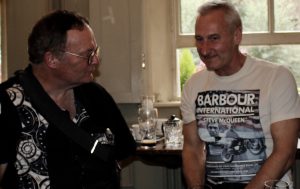
Anthony Galvin and Michael Fowler
Charlie Garratt is drafting book three in his intriguing historical mystery series, the Inspector James Given Investigations.
The captivating fourth instalment of Valerie Holmes’ sweeping Regency adventure series, The Yorkshire Saga, will be coming out soon.
Two members of the Romantic Novelists’ Association, Natalie Kleinmann and Ros Rendle, have recently signed with us and will be bringing out brilliant new books next year.
A brand-new book in Simon Michael’s atmospheric historical crime series, the Charles Holborne Legal Thrillers, is going up on pre-order this month and he has an idea in mind for the next one.
We will soon be publishing book five in Linda Stratmann’s absorbing Victorian detective series, the Mina Scarletti Mysteries, and she has started work on book six.
Deborah Swift’s powerful new wartime romance, The Occupation, will be out by the end of this year.
Thank you to all of the authors who were able to attend, and we hope to see everyone again to celebrate our second anniversary in March!
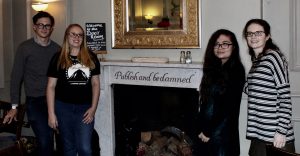
The Sapere Books team
Image credit: a big thank you to Gary Stratmann for his photographs.
Gaynor Torrance is the author of the DI JEMIMA HUXLEY THRILLERS series.
Like many other people, I’m a crime thriller junkie. I can honestly say that books in this genre are my guilty pleasure — as well as chocolate, of course. As far as I’m concerned, it has to be well-written and absolutely has to have a complex plot. I need an abundance of twists and turns, along with a large helping of red herrings. If it keeps me guessing, it will offer me everything I expect from a good book.
I want the story to grab me and not let go. Whenever this happens, my own identity quickly fades into the background, and I become the protagonist. Gender is unimportant to me. I don’t care whether the protagonist is male or female. The only thing that matters is that I inhabit a world I would shun in real life. Fictional characters are instantly relying on me, and I’m desperately trying to save lives whilst I figure out what’s going on. 
From the safety of a comfy armchair, these books have transported me to places I’ll never visit. They’ve presented me with opportunities to solve mysteries. Allowed me to get up close and personal with some of the most evil and twisted minds you could ever imagine. Over the years, I’ve brought justice to victims, been caught up in life-threatening situations and sometimes even had a hand in saving the world from imminent disaster.
Immersing oneself in these fictional scenarios is my ultimate form of escapism. It’s a white-knuckle ride minus the personal risk.
Having so many ideas of my own, I decided to take things a step further. And so I began writing about Detective Inspector Jemima Huxley, whose stories are set in Cardiff, a city I know well.
I love Jemima, but that’s because I know what makes her tick. I appreciate that on first appearance, she’s perhaps not the most likeable of characters. In Revenge, which is when readers are introduced to her, she comes across a bit like Marmite. She’s not a typical lead detective, and this will polarise opinion, as you’ll either love her or hate her.
When I created Jemima, I wanted her to have an interesting backstory. Over the years, I’ve read so many crime novels that have a hard-nosed lead detective heavily dependent on alcohol. Or whose personal relationships are in tatters because of the pressures of the job.
DI Jemima Huxley is different. She’s a modern woman who gets stuck in and excels at her job. Jemima is determined to have it all. At work, she’s a capable, dedicated detective: loyal, brave and intelligent. If only she had more control over other aspects of her life…
If you’ve read Revenge, you’ll already know that Jemima has some serious personal issues. She’s hiding things from everybody. Her mental health is suffering, and she’s in danger of falling down a rather large rabbit hole.
Most importantly, Jemima hasn’t yet figured out what’s at the root of her problems. I have a feeling that that epiphany is a long way off, and until it happens, there’s little chance she’ll begin to turn things around.
Jemima’s personal torment manifests itself in a way that is guaranteed to upset some readers. And I’ll let you in on a secret — I’ve shed tears as I’m writing those scenes. What Jemima does to her body is shocking, brutal and heartbreaking. But her method of keeping a lid on things is a reality for some people.
It’s a sad fact that mental health issues are still stigmatised. And, like many others, Jemima feels compelled to hide her suffering for fear of being judged.
But Jemima isn’t the sort of person to give up easily. She has her low moments but always seems to manage to pull herself together and face whatever life throws at her. Any serial killers stalking the streets of Cardiff had better watch out, because Jemima’s returning soon to investigate her next big case, Sole Survivor!
Click here to order REVENGE now!
Hi Gillian! Welcome to the Sapere Books blog!
The first two books you have published with us have similar themes of children going missing and families struggling to find them. What initially drew you to those sorts of stories?
I set out to write a compelling story (and what is more compelling than the abduction of a child?) that could be seen from several different perspectives. Those of us who are parents can imagine the horror of a missing child, and I was able to draw on my experience of a time when my own two-year-old daughter went missing from our garden. She was only out of my sight for a few moments and fortunately was found within forty minutes, but the gamut of emotions my husband and I experienced was terrifying. The fear, guilt and despair almost crippled us. I was able to project some of these emotions onto the parents in Abduction and Snatched, who had to wait more than an hour to find out what had happened to their missing children.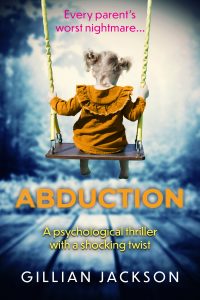
We will soon be publishing a third thriller by you – THE ACCIDENT. Can you give us a little teaser of what it’s about?
This is a book I consider to be my ‘ripples in a pond’ novel. It begins, as the title suggests, with an accident and follows the consequences for those involved. As the story unfolds, jealousy comes into play with a shocking outcome; a life changing injury is faced, and the very best possible outcome is derived from the very worst scenario. If that isn’t enough, there’s a smattering of romance too!
Have you always wanted to be a writer? What first got you into writing?
It wasn’t until my early fifties that I began writing seriously, although I’ve dabbled in children’s stories and short stories for most of my adult life. Initially, writing was for me a therapeutic experience, as I kept a journal while recovering from a rather difficult period in my life. The first book I ever wrote was a small self-help book, my only foray into nonfiction so far.
What part of the writing process do you find the most challenging?
Probably the ending, as I sometimes get too bogged down in tying up all the loose ends until I’m satisfied that the story is properly wrapped up. Perhaps this is because when I read a book, I find an incomplete ending so frustrating!
Where and how do you write? Do you have set hours or do you write when you feel motivated? And do you have a favourite writing spot?
Being easily distracted, I’m fortunate to have a designated study to lock myself away to write. I try to write most days but often find my mind most active late at night when all these fictional characters keep me awake with their conversations, and I need to write, or at least make notes. As a work in progress develops, the time I spend on it increases as my enthusiasm grows.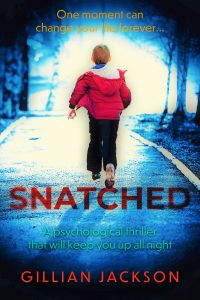
Do you like to read the same types of books you write? Or something completely different? Can you tell us some of your favourite books?
I read quite widely, from thrillers to sagas. I love all of Kate Morton’s books as well as Victoria Hislop’s, particularly The Island. Some of my all-time favourite books are Jane Austen’s novels and the works of the Brontë sisters; I love the sense of atmosphere that leaps off every page, and Austen’s wit is amazing and so timeless!
What three tips would you give to aspiring writers?
You can’t do enough editing and polishing. The temptation when you write those satisfying words ‘the end’ is to get your book out into the world. Don’t – leave it for a couple of weeks and go back to read it again with fresh eyes; you’ll be surprised. Also, write what you know, and enjoy the journey.
Tell us something surprising about yourself!
I used to walk my rather large pet goat, Hobnob, around the streets on a lead. We were discovered and interviewed for BBC TV, but I had to do most of the talking.
Gillian Jackson is the author of psychological and domestic thrillers.
Click here to order ABDUCTION.
Michael Fowler is the author of the DS HUNTER KERR INVESTIGATIONS series.
In 2010, after 32 years as a cop, and an even longer time as a passionate writer and lover of crime fiction, Heart of The Demon — the first in the DS Hunter Kerr series — materialised as the book I always told myself I could write.
It is inspired by a true crime event. As a Detective Sergeant, I was following up information in relation to a girl who had been missing for a number of years, and much of her previous history was recorded on her original missing report that had been filed away and stored in the basement at Barnsley Police station.
Whilst seeking it out, I came across a large cardboard box, which, upon rooting through, I found it contained the court file and crime scene photos for a man called Peter Pickering, who was dubbed ‘The Beast of Wombwell,’ and I couldn’t resist rummaging through the contents to get an insight into his crimes.
Peter Pickering was first convicted of attacking two schoolgirls in 1966 and was jailed for six years.
In 1972, five months after his release, he abducted 14-year-old schoolgirl Shirley Ann Brody in his home town of Wombwell, near Barnsley, drove her to secluded woodland, where he raped her and stabbed her while wearing yellow washing-up gloves — a detail that gave rise to his other tabloid nickname, the “maniac in the marigolds”.
Following that murder he was locked up in a psychiatric hospital, but it was always believed he had committed more attacks and murders, and he was interviewed by detectives on numerous occasions over several decades. The focus of those interviews were the murders of 14-year-old Anne Dunwell, from Rotherham, in 1964, and 14-year-old Elsie Frost, from Bradford, in 1965.
He refused to cooperate. However, following another investigation, detectives found evidence linking him to the rape of a Sheffield woman, committed just weeks before he abducted and murdered Shirley Ann Brody, and last year, at the age of 80, he was convicted of that rape.
Early this year Pickering died, taking his secrets to the grave. The finding of the Peter Pickering case file in Barnsley Police Station basement became a light-bulb moment for me as a writer, and has not only provided some of the background for Heart of the Demon, but has also inspired another of my Hunter Kerr novels, Shadow of The Beast.
Michael Fowler is the author of the DS HUNTER KERR INVESTIGATIONS series.
Click here to order HEART OF THE DEMON now!
On Tuesday we attended the annual autumn Independent Publishers’ Guild conference, which is a great chance for us to find out more about the latest developments in the industry, get some ideas and inspiration for our own practices, and catch up with old friends. Here are our highlights from the day!
the latest developments in the industry, get some ideas and inspiration for our own practices, and catch up with old friends. Here are our highlights from the day!
The conference opened with a keynote speech from serial entrepreneur Sam Conniff Allende, the author of self-help book Be More Pirate. He shared his thoughts on the importance of rule-breaking: challenging systems and taking risks to effect positive change and drive success. Sam also compared Golden Age pirates with modern entrepreneurs – in terms of their powerful branding and shrewd tactics!
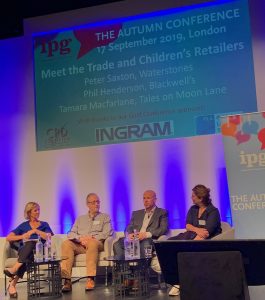
Booksellers Peter Saxton, Phil Henderson and Tamara Macfarlane
A talk on the importance of fresh branding and operations was led by Stephen Page of Faber and Faber, Nicola Usborne of Usborne Publishing, and Chris Bennett of Cambridge University Press. Each showed how developing modern-looking visual marketing campaigns, analysing previous successes and failures, and maximising the potential of their backlists keep their businesses moving forward.
A trio of trade and children’s retailers – Peter Saxton of Waterstones, Phil Henderson of Blackwell’s and Tamara Macfarlane of Tales on Moon Lane – brought us up to date on the latest trends in bookselling. A particularly welcome development is a surge in the popularity of books celebrating women in non-gender-stereotypical roles and inspirational stories for young girls.
Jeremy Yates-Round of Haynes Publishing showed how he keeps his business agile in a tough climate. Techniques included humorous and imaginative marketing campaigns, both licensing and being licensed by external brands, and offering customers different platforms to access content (e.g. via online apps).
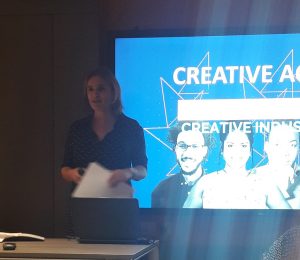
Josie Dobrin of Creative Access
Josie Dobrin of Creative Access and Rik Ubhi of Zed Books led an important discussion on how publishers can attract, welcome and maintain a diverse workforce. Practical tips for recruiters included undertaking unconscious bias training, checking recruitment data to see at what point in the selection process BAME candidates are excluded (and working to fix the filtering systems so that this happens less frequently), avoiding the ‘quick hire’, removing unnecessarily high barriers for entry-level jobs, and making existing BAME hires feel safe, listened to and valued.

Claire Farrell, Extinction Rebellion co-founder
Clare Farrell, the co-founder of Extinction Rebellion (XR) – a climate change mitigation movement – gave a rousing speech on the realities of the climate emergency and the ways in which XR is putting pressure on governments to instigate action on a wider scale. She also explained how the publishing sector can take its own stand via actions as simple as using recycled paper for all books.
The conference wrapped up with a surprise singing lesson from author and musician James Sills – good fun for all!
On Saturday, Amy and I travelled to York to celebrate the winner of the RNA’s Joan Hessayon Award.
The Joan Hessayon Award is for a debut author who has had their book accepted for publication after passing through the Romantic 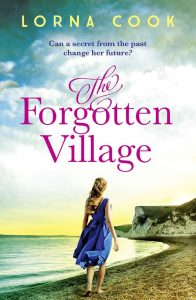 Novelists’ Association New Writers’ Scheme.
Novelists’ Association New Writers’ Scheme.
This year’s shortlist of fifteen included sweeping wartime romances, uplifting stories of self-discovery, and intriguing mysteries.
Our editorial director, Amy Durant, judged the shortlist alongside RNA Chair Alison May, Vice Chair Imogen Howson, and Simon & Schuster’s Sara-Jade Virtue.
This year’s winner is The Forgotten Village by Lorna Cook: a story of hope, new beginnings and unlooked-for love. Cook’s debut novel intertwines two love stories: one set in 2018, and one set in 1943.
In the present, twenty-eight-year-old Melissa is stuck on a lacklustre holiday in Dorset, with a boyfriend who seems more interested in surfing than working on their stale relationship. On a whim, she visits the nearby village of Tyneham, which was evacuated and closed during WW2 but is now open to the public. There she runs into Guy, a charming celebrity historian. Intrigued by a seventy-five-year-old photograph of Veronica Standish — the long-suffering wife of Tyneham’s tyrannical nobleman — Melissa enlists Guy’s help to find out more about her. They soon find themselves untangling a decades-old mystery to discover the fate of Veronica, her husband, and her secret lover.
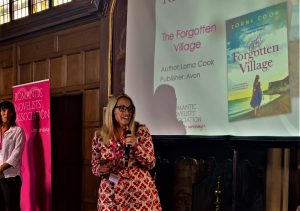
Joan Hessayon Award winner Lorna Cook
As well as skilfully navigating and developing two romantic plots, Cook should be praised for her deft interweaving of historical detail, her strong sense of voice and character, and her sensitive handling of one of the book’s more difficult themes: domestic abuse.
We would like to send a huge congratulations to Lorna — and to all of the authors who participated, and managed to overcome the huge hurdle of getting a publishing deal!
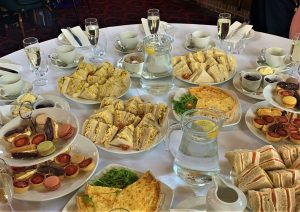
Afternoon tea!
As well as indulging in a wonderful Afternoon Tea before the ceremony, we also had the chance to catch up with two of our authors: Ros Rendle and Natalie Kleinman, both of whom have fabulous romantic fiction forthcoming with Sapere Books.
Ros’ Strong Sisters series will explore family relationships, rivalries, and love. Natalie’s Regency romances will feature spirited heroines, determined to succeed against the odds.
Image credits:
The Forgotten Village by Lorna Cook, published by Avon in 2019.
Featured image: Photo by Brigitte Tohm on Unsplash.
Hi Elizabeth! Welcome to the Sapere Books blog!
Elizabeth Bailey is the author of THE LADY FAN MYSTERY SERIES – romantic Regency crime novels, and THE BRIDES BY CHANCE REGENCY ADVENTURE SERIES.
Can you tell us a little a bit about what first got you interested in writing?
I can’t think of a time I didn’t write. I dabbled for most of my young and adult life, but I was in my thirties when I became a member of a co-operative writing group with the idea of sending out each other’s work. I wrote several short stories and then decided to write a historical romance, a genre I had been reading from a child beginning with the novels of Georgette Heyer. That book, though it never saw the light of day, was the turning point. I loved writing it and felt I had at last found my true metier. I’ve been writing fiction ever since.
Do you have set writing times?
Mostly I write my first draft early morning in bed after I’ve had my tea. If I can get between 500 to 1500 words written, I feel I’m making progress. I try to get it all down without research, leaving notes to myself within the text where I need more data. The murder or where it happens, I will usually check out before I start, unless I add something new and have to go and find out about it before I can get on. I can’t start at all until I have names of the main characters and a general idea of what is likely to happen in the first couple of chapters. I actually don’t usually know who the murderer is when I begin. Nothing like making life interesting for yourself!
Seeing as you write historical fiction, do you find you have to do a lot of research?
These days with many years of historicals of the same period behind me I am so familiar with the time that my research is mostly for specifics. I have many books collected over the years which furnish me with the detail I need. My main focus of research is in the area of the murder and the internet is a mine of information on the subject. You can find contemporary sources relating to anatomical matters, which means I can be as accurate as possible according to knowledge of the era. However, I do turn to current material for exact descriptions of what happens, for example, when someone is bludgeoned, knifed or otherwise injured. All of which is fascinating to read about.
What part of the writing process do you find most difficult?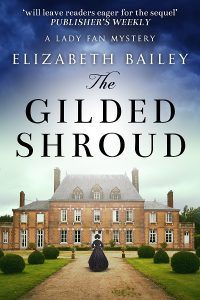
Struggling through against the odds when life intervenes. This happens and you just have to deal with it. It’s virtually impossible in this day and age to shut yourself away in an ivory tower to get your first draft done. I wrote a short book in a week once on a holiday. Another time I forced through 5000 words a day to get a novel done. But it’s not optimum. It doesn’t allow time for the filtering process that builds the minutiae of the story and generates ideas you hadn’t thought of until some trigger sets them off. Working steadily every day seems to build a book better, but it does mean you are subject to interruptions and getting back into it after a break is the hardest thing of all.
Do you find your characters start to control their own storylines?
Yes, they become totally real, and some characters are completely independent and go off in unexpected directions. The thing is, you invest them with life and then they become real people (albeit in a sort of ghost form in your head). They start behaving according to their character and you might have no idea of who they really are until they do this. Ottilia is a case in point. She was supposed to be a retiring female, letting Francis take the lead. Not a bit of it. She marched into centre stage the minute I set her on the page and stayed there. In the book I’m currently writing, I had a peripheral character take off in much the same way and seize quite a chunk of the story from Ottilia. Experience has taught me to run with it. I have a great belief in the Inner Writer knowing a great deal more than I do about the developing story. It really is like being two people sometimes.
Do you ever feel guilty about killing off characters in your crime series?
Apart from the initial dead body, I hesitate. The first death is the spur for the story, so that’s all right. We usually don’t know that person. But it’s very hard to kill off someone who has become a character in their own right. But that’s good, I think. It transfers to my heroine, who is allowed to have an emotional reaction to such a death.
Do you find it hard to know when to end a story?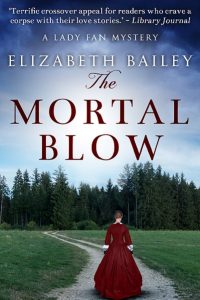
Usually the story comes to a natural conclusion. Then it’s just a matter of tying up loose ends and giving my lead characters a chance to mull and make decisions of their own. I like to keep the denouement fairly short. When the story is finished, that’s it. And there’s a maxim – always leave the reader wanting more. If you ice the cake too richly, they might be too satisfied to want another slice.
Which book by another author do you wish you had written?
Oh, that’s a tough one. For sheer quality perhaps, another long-time favourite, In This House of Brede by Rumer Godden. So subtle, engaging, insightful and just beautifully written. But then I would love to write like PG Wodehouse whose Jeeves and Bertie books I adore. I’ve had a go in a play I wrote for school when I was teaching drama, and I have a short story out in a similar style (To Catch a Thief). Or Terry Pratchett with such a discerning eye for the human condition.
Tell us something surprising about you!
When I was a teenager, I won two cups for target shooting with a 303 rifle. Now I couldn’t hit a haystack!
We (Amy and Natalie) will be at the 2019 Joan Hessayon Award Presentation, run by the Romantic Novelists’ Association.
The award is for a debut author who has had their book accepted for publication after passing through the Romantic Novelists’ Association New Writers’ Scheme.
This year our editorial director, Amy Durant, served as a judge.
The ceremony takes place on 14th September, and you can find out more here.


Laxton Village is believed to be the last remaining example in Europe where the Open Field System and Court Leet have been preserved. It boasts a unique 1,845 acre heritage estate — including 525 acres of unenclosed open fields — produces in excess of £230,000 per annum, and is of significant educational and curatorial interest. The village is now on sale for £7m.
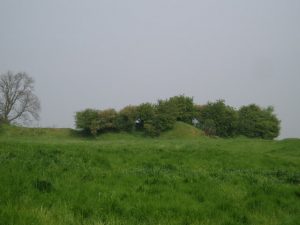
Castle mound: the site of an 11th-century castle in Laxton.
THE ESTATE
The Laxton Estate is situated in and around the picturesque village of Laxton, surrounded by rolling countryside. The village is linear and unusual in appearance, comprising 17 traditional red brick farmsteads in addition to a village pub and visitor centre. The majority of the estate is farmed under Agricultural Holdings Act (AHA) and Farm Business Tenancy (FBT) agreements. Each farm tenant benefits from a home farmstead and land let under AHA and/or FBT and a right to farm land within 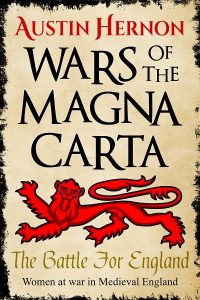 the open field system as administrated by Laxton Court Leet, an ancient manorial Court with legal status as a court of Law.
the open field system as administrated by Laxton Court Leet, an ancient manorial Court with legal status as a court of Law.
You can find out more about the history of Laxton from the Wars of the Magna Carta series. The first instalment, The Battle For England, features Laxton Castle, domain of the brave heroine Matilda.
Image credit:
Castle mound at Laxton, Nottinghamshire. Source: Wikipedia, contributed by Robert Goulden. Used under Creative Commons CC BY-SA 2.0 licence.
When did you first start writing? Did a specific event encourage you to start?
When I was six years old, I saw a TV programme about the Blitz, which as you can imagine was pretty alarming. I wrote a poem about it.
How much research do you do?
I am fascinated with the Victorian era and do a lot of research to try and get the details right. I read contemporary newspapers and journal articles, biographies and medical works. I study maps, census returns, directories, legislation, photographs, and art. I have about a hundred books just on the history of spiritualism.
Tell us about where you write / your writing habits.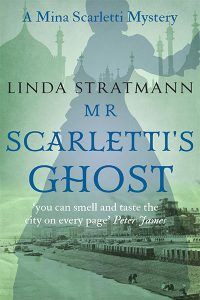
I work from home and have a room which is my office. I don’t work set hours; even when I am doing the household chores, my mind is still working on my latest project or planning a new one.
What part of the writing process do you find most difficult? Starting, knowing when you’ve done enough research, the ending?
When I begin a project, I know where I am starting from and where I will end up, but I have to link the two in a way that makes sense. Every time I pause in order to find that natural link, I have to remind myself that I found it last time. It’s worked so far.
How real do your characters become and do they ever seem to control their own storyline?
They feel very real to me, and because I let themes develop naturally in my mind often the characters do things that I hadn’t necessarily planned but emerge from their personalities and situations, so sometimes they do take me by surprise.
Do you ever feel guilty about killing off characters or do you relish it?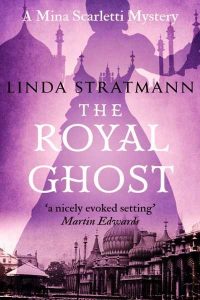
Neither, but it is sometimes sad. It’s very hard writing about a character who I know is about to become a murder victim.
Do you find it hard to know when to end a story?
No, I know when it feels right to me.
What are you working on?
I am editing a new volume in the Notable British Trials series about the trial of the Mannings in 1849. I am also developing the plot for the fifth Mina Scarletti book, to be entitled His Father’s Ghost.
What are you reading right now?
Munich by Robert Harris.
What is your favourite book? Who is your favourite character?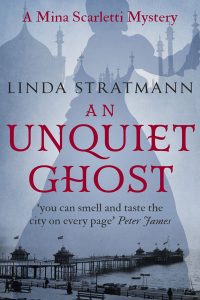
I have read thousands of books and it is impossible to pick one!
What book do you wish you had written?
See above.
Do you love any genres/books that are very different from what you write?
Most of my reading is non-fiction: history, biography, true crime, psychology. In crime fiction, I tend to read books with modern settings or if historical, a very different time period from the one I write about.
Tell us something surprising about you!
I prefer pickles to sweets!
When did you first start writing? Did a specific event encourage you to start?
There has never been a time when I didn’t write. As a child, my idea of a perfect game was to tell a story to my teddies, then write it down. It was never a conscious decision, it was part of me then and it still is now.

How much research do you do?
It entirely depends on the story. For a while I wrote film scripts, mostly comedies, and they didn’t need any research. Likewise my first few attempts at novels (still languishing unpublished!). One story, The Music Makers took all its chapter heading from the wheel of the Major Arcana cards in the Tarot pack. Although I was a fairly proficient Tarot reader back then, I did research other, wider meanings, for the cards to add extra depth to the main character’s adventures.
The Marquess House Trilogy, which has a split timeline comprising of a present day strand and a historical section has taken years of research. Book one: The Catherine Howard Conspiracy was actually not my intended starting place. The big reveal that appears in book two: The Two Elizabeths was the kernel of the idea for this story and, over the years, I have written many different versions of it trying to make it work. However, none of them were quite right and after several years of juggling work, life and researching Elizabethan England I realised the only way I’d be able to capture this monster of a story on paper was to split it into three separate tales, rather than trying to cram it into one book. Three books, one for each piece of jewellery: two ruby rings and a silver locket.
It was actually devastating because it meant starting again from the beginning. In true frustrated writer style, rather than face this unhappy truth, I wrote a comedy instead, entitled The Patron Saint of Married Women, which was set in the present day and needed very little research. In. Your. Face. History.
In the end, I caved in and began researching Henry VIII’s fourth and fifth brides. I also made the alarming decision to dump my two main characters: Isabella and Oliver. I never liked them much anyway. The name Perdita had been running around my head for a while. From reading Dodie Smith’s One Hundred and One Dalmatians when I was younger, I knew it meant Little Lost One and somehow this seemed appropriate for my main character. Then one morning, I woke up with the question: “Who is Piper?” running around my head. Immediately, I knew she was Perdita’s twin sister and something clicked into place.
The very very first version of this story featured Isabella (now gone) mourning her twin sister who had died under mysterious circumstances on an archaeological dig after she had unearthed a silver locket. The idea was that she had been murdered by MI One Elite. Strangely, the nasty old Watchers were there from the beginning, as was Mary Fitzroy, James Rivers and Alistair Mackensie. Jerusalem was always around too, although it took me a while to settle on its true nature. Warren Dexter was another one who survived the character cull. However, it wasn’t until Perdita and Piper popped up that the story suddenly opened up before me. Then, Kit arrived. He had been through a number of names and he finally found an identity because I quite fancied Kit Harington who plays Jon Snow in Game of Thrones. Yes, it’s an embarrassing admission but he was the inspiration for Kit and once he had his name, the last piece of the puzzle was in place and the story flooded out.
I’ve long since moved past my toe-curling crush, though. Ahem.
Anyway, in answer to your question, at present, several months of research and writing of detailed timelines. By gathering all the information into one huge chart, it’s easier to write fluently and present a more rounded and believable version of my historical periods.
Tell us about where you write / your writing habits.
I have a purpose built writing hut in the garden with insulation and a heater. I write every day and, at the moment, am lucky enough to be able to treat it like my day-job.

What part of the writing process do you find most difficult? Starting, knowing when you’ve done enough research, the ending?
It varies. I love the lure of the blank page. Every piece of paper is an adventure waiting to unfold. Knowing when you’ve done enough research is a tricky one but there comes a point where you have to plunge in and see what happens. I don’t like writing endings, not because I don’t like them but because it means you’re saying goodbye to your characters.
How real do your characters become and do they ever seem to control their own storyline?
Very real. They all seem to end up taking over their own storylines. Sometimes, I even argue with them. Although perhaps I shouldn’t have admitted that…
Do you ever feel guilty about killing off characters or do you relish it?
Never! I worry about killing them off for different reasons. What about if I suddenly realise I need them again but they died in Chapter Four?!! EEEKKK!
Do you find it hard to know when to end a story?
Usually I know the end before I begin. The Marquess House trilogy has proved more troublesome though because in my head, it’s one long story, so realising I had to make three endings, instead of just the one at the very very end of book three, has taken a while to adjust to.
What are you working on?
Part three of The Marquess House trilogy. It’s working title was always Prince Oliver but I don’t think this works any more. The title will arrive when its ready.
What are you reading right now?
The Moon Sister by Lucinda Riley. It’s part five of her Seven Sisters series. I only recently discovered these books but I’m really enjoying them.
What is your favourite book? Who is your favourite character?
This is a tough one. How do you choose between so many friends? And also, do I go for something literary and make it look as though I’m very high brow or do I tell the truth?!
For a long time now, my favourite book has been Harry Potter and the Prisoner of Azkaban. I was going through quite a tough time when I began reading these books and, not only was Hogwarts a wonderful place to hide, I was awed by J K Rowling’s brilliance. Goblet of Fire had just been released, the films had been cast and the storm of Harry Potter was building. I never like making judgements on phenomena unless I’ve read/seen/visited them, so I bought the books. Philosopher’s Stone hooked me from page one. Chamber of Secrets worried me – who was Dobby? Was he good or bad? – but when I read the third book with its fabulous twist with Scabbers and the appearance of Sirius Black who had first been mentioned in chapter one of book one, I realised this was more than a series of children’s books. This was truly magical. I’ve asked for help at Hogwarts many times and it’s always been given.
My favourite character is Hermione Granger. Although Harry is pretty amazing too.
I also love Ballet Shoes by Noel Streatfeild and Moll Flanders by Daniel Defoe.
What book do you wish you had written?
Apart for the Harry Potter series? The God of Small Things by Arundhati Roy or The Passion by Jeanette Winterson.
Do you love any genres/books that are very different from what you write?
I try to read a broad cross-section of genres. If a story is well-written, it’ll grip you no matter what the genre. I try never to suffer from literary snobbery. Every book is worth trying, you may not make friends there but you don’t need to be rude!
Tell us something surprising about you!
I play musicals in the background while I write.
When did you first start writing? Did a specific event encourage you to start?
I can’t remember a time when I didn’t write something; poetry as a child, then on to short stories when my children were small, and then novels.
How much research do you do?
It depends. I had to do quite a lot for Dead Ernest as it was set during WW2, but often it’s just my own experience. I did once phone a safari park to find out how a monkey would behave if trapped in a car (for Women Behaving Badly), and they said they had no idea!
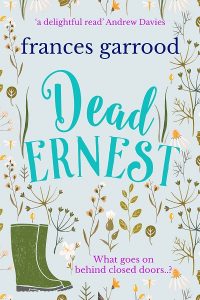
Tell us about where you write / your writing habits.
I’m afraid I don’t have any. I’m totally lacking in discipline, and I just write when I feel like it, at a desk in a corner of our bedroom. Not very professional, I’m afraid…
What part of the writing process do you find most difficult?
Starting, knowing when you’ve done enough research, the ending? I think the middle is difficult, but I’m not a planner, so I can get stuck anywhere. I usually just let the story take me where it wants to, and sometimes it doesn’t want to!
How real do your characters become and do they ever seem to control their own storyline?
They become very real, and I really hate letting go of them in the end. They certainly control the story to a great extent, especially when they’re speaking. I love writing dialogue.
Do you ever feel guilty about killing off characters or do you relish it?
A bit of both. But it’s also quite cathartic for me, because I was widowed fairly young, and I use my own experience of bereavement.
Do you find it hard to know when to end a story?
So far, my books have ended more or less of their own accord, but that could change (though I hope not).
What are you working on?
I’ve actually started three, and am waiting for one of them to take off. Two are sequels, and sequels are – I’ve discovered – a lot harder than I thought they’d be
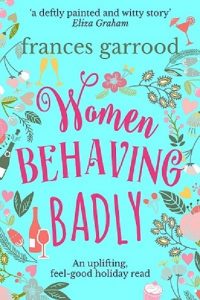
What are you reading right now?
A little-known novel by Anthony Trollope (my favourite author): The Belton Estate.T I’ve read pretty well all his books, several more than once, and was delighted to find this one.
What is your favourite book? Who is your favourite character?
Without doubt, George Elliot’s Middlemarch. And my favourite character has to be Winnie the Pooh.
What book do you wish you had written?
At the moment, it’s Gail Honeyman’s stunning debut Eleanor Oliphant is Completely Fine. Otherwise, pretty well anything by Anne Tyler.
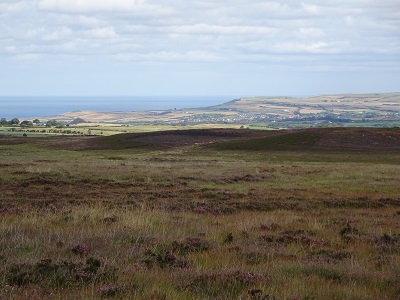
The North York Moors national park has one of the largest expanses of heather moorland in England covering an area of 554 sq miles. For centuries people have crossed this exposed, wild, boggy moorland for trade, social and religious reasons leaving a network of fragmented stone pathways that are lovingly walked and explored by hikers today. All who do respect this mainly inaccessible landscape, which is both beautiful and dangerous to traverse. But what tales these ancient paths could tell of the people who have trodden them over the centuries.
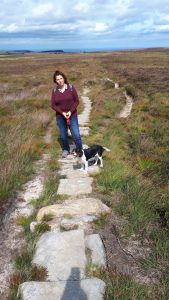
The oldest broken pathways, known locally as ‘Monks trods’ could date back to the Neolithic era. Certainly Roman soldiers have used some of the broader causeways near Whitby. The connection with monks stems from the medieval period when abbeys flourished within the region. Today we see the ruins of Whitby, Rievaulx, Guisborough and Mount Grace Priory to name but a few of these once great communities. These monasteries often housed large numbers of people and linked to other communities by the network of pathways. In Medieval times wool would be transported on them to ports such as Hull and from there to markets overseas.
The monasteries often owned farms and land miles apart. In For Richer, For Poorer I linked the two fictitious towns of Gorebeck and Beckton by one such trod that cuts across Gorebeck Moor. Gorebeck Abbey School was linked to Beckton Abbey by trade and the pathway, although rugged and unwelcoming it was known to Parthena. This was no easy route of escape by, especially at night time, it took courage and daring – but essentially local knowledge, or else it would certainly have been tantamount to a death wish. This summer I was caught out in a sudden horizontal rain storm on one of the Quaker’s Causeway, near Commondale and even with modern waterproofs and hiking boots the wind had a bitter chill.
Parthena’s pursuer, like Beth and Willoughby in To Love, Honour and Obey had to travel in single file as the stones were only designed to take a train of pack horses travelling in a line as goods were regularly transported by pack horse.
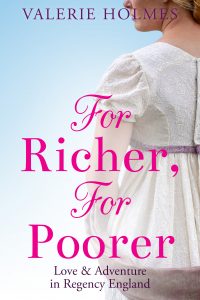
Beyond the medieval period the need to transport coal, charcoal, jet, alum and lime grew. Fresh fish from the coast needed to reach its market as quickly as possible whilst it was still fresh. Wagons would easily become bogged down in such conditions and so for centuries the pack horse was essential.
These are some of the legitimate uses for these ancient routes, as well as the need for communities such as The Quakers in the early eighteenth century to reach meetings and friend’s houses. They were also essential for people to reach the mills and towns for work as the centuries turned.
However, in the early nineteenth century, when many of my stories are set, smugglers also had local knowledge, could pay a man more than a farmer’s wage and they also needed to disperse landed contraband as quickly and efficiently as possible. Therefore, many of my stories have mentioned the use of the old trods for this purpose.
Once roads were built to cross the moorland then the need for the trods diminished and some of the ancient stone was reused for building. These roads may have even been built over the original paths as their way was the most direct. But what is left provides an interesting connection to the past and a way for people today to access this beautiful wilderness today.
When did you first start writing? Did a specific event encourage you to start?
I started writing when I was a teacher. I first wrote short plays for performance. When I gave up teaching in 2012, it was the bicentenary of the birth of Charles Dickens. When I read that he had a secret desire to be a detective, I wondered if I could write the crime novel that I had always wanted to write, so I gave it a try with Dickens as my detective.
How much research do you do?
Because my novels are historical crime novels, I need to do a lot of research into Dickens’s life and times, and into nineteenth century forensics. I need to know what the Victorians knew about poison, or stabbing, or shooting, or drowning and post mortems in the mid-nineteenth century.
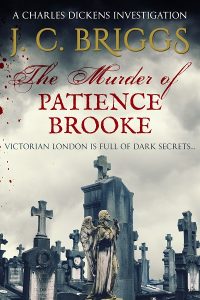
Tell us about where you write / your writing habits.
I write in a little room in my house. I often write sections of the novel long-hand and then type them up and make changes as I go. I always carry a notebook to jot down ideas when I’m on a train or waiting for someone – you never know what you might overhear!
What part of the writing process do you find most difficult? Starting, knowing when you’ve done enough research, the ending
I find it easy to start. Often the beginning of a novel comes from something I’ve read, especially something from Dickens’s letters. Then I get stuck in working out the plot, especially when I find that X couldn’t have done the murder at that point because she/he was somewhere else at the time!
How real do your characters become and do they ever seem to control their own storyline?
Very real – that’s why I enjoy writing a series. You can bring characters back. It’s very odd how characters you expected to play a minor part in the story start to develop in ways you had not planned and begin to play a major role. Then they seem to have a back story and you think: where did that come from?
Do you ever feel guilty about killing off characters or do you relish it?
It’s always satisfying to get rid of the murderer because that means the case is solved. And there have to be other victims – one murder doesn’t make a crime novel. You can’t help relishing the dramatic deaths, but sometimes you do feel sorry for the victim. Then you think: sorry, but you’ve had your lot, it’s time for another killing – keep up the suspense!
Do you find it hard to know when to end a story?
Not in the sense that you know it’s over when the case is solved, but you also have to think carefully about the very last paragraphs. You want to leave the reader thinking about the effects it has all had on the characters who are left and what their futures hold – if they have one.
What are you working on?
A novel which begins in Ferrara where Dickens went in 1844; I found a letter he wrote from there in which he describes some girls looking down into a stretch of water. It was twilight, the sun was setting and the walls of the castle were blood-red. Dickens writes that he knew the place although he had not been there before and that it chilled his blood. I wondered what those girls were looking at in the water and why Dickens was suddenly frightened. Murder?
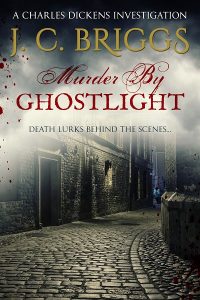
What are you reading right now?
Bleak House
What is your favourite book? Who is your favourite character?
Great Expectations. Miss Havisham.
What book do you wish you had written?
So many, it’s too hard to choose, but there’s a wonderful book: Pinkerton’s Sister by Peter Rushforth, which is so rich in character and incident and full of all kinds of literary allusions that I can’t help wishing …
Do you love any genres/books that are very different from what you write?
One of my favourite authors is William Trevor; I’ve just finished The Silence in the Garden which is about Ireland before the First World War. I love fiction about Ireland.
Tell us something surprising about you!
I was the voice over in a television show in Hong Kong. I was a puppet named Violet the Vulture – I played her as a kind of avian Lady Bracknell. My husband, who wrote the show, was Barney the Bear, and we had a kangaroo called Alice Springs.
Are you working on a new series set in the Age of Sail? Have you written a naval thriller set during the World Wars? Are you passionate about seafaring stories? Sapere Books wants to hear from you!

We are actively looking to acquire nautical fiction from both debut and established authors. We are particularly interested in historical naval fiction, nautical thrillers, and books in a series.
If you are an author who owns the rights to a previously published naval series, or a writer working on a new nautical novel, please get in touch and tell us about it!
Email our Editorial Director, Amy Durant, directly with some information about your nautical writing and a synopsis of your naval novel and we will get back to you as soon as possible.
We hope to hear from you soon!
Ellen Tyrell’s Nose and Other Suspicious Circumstances
With thanks to the British Newspaper Archive
I am looking for a drowned girl. My old friend, Professor Swaine Taylor will, no doubt, provide the grisly forensic detail in his Medical Jurisprudence: ‘the eyelids livid, and the pupils dilated; the mouth closed or half-open, the tongue swollen and congested … sometimes indented or even lacerated by the teeth …’
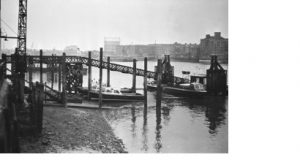
I need an inquest on said drowned girl; this is where the British Newspaper Archive comes in. There are drowned girls aplenty in London in the decade 1840-49. Poor things, dragged from the Thames, the Regent’s Canal, the Surrey Canal, the New River, the Serpentine, the lake in Regent’s Park, from under Waterloo Bridge – a favourite spot for those seduced and abandoned girls. There they lie stretched out on muddy shores and banks, their bonnets askew, one boot missing, or both, their faces pale like Millais’ Ophelia, or more likely, bloated and bruised, or half-eaten by decomposition – or rats. Their bodies sometimes float, buoyed up by petticoats – the effect of air retained by the clothes, or the presence of gases. Sometimes a thin hand grasps a clump of weed which, according to Professor Taylor, indicates that the victim went into the water alive. Did she fall or was she pushed? Suicide, most often.
I find the case of the suicide of two young sisters dragged from a Leeds canal in April 1847, tied together by a handkerchief. The handkerchief is pitiable somehow, and memorable. Dickens must have read of that case for he uses the same circumstance in Our Mutual Friend. Something of a thrill in contemplating that, but I need only one girl.
I need an unknown drowned girl, unclaimed, buried at the expense of the parish, and forgotten. Somewhere in a village, a mother wonders about her lost child. She will never know what became of her ruined darling. The Morning Post in February 1842 explains: ‘In London the bodies are taken to any obscure vault, public house, or police office. The Coroner directs the parish to advertise the body, often in vain.’
I find several cases of unidentified females in the newspaper archive. In July 1841, according to The Morning Advertiser, a young woman was pulled from the London Dock. She was never identified. I am intrigued by the report’s dark observation that ‘No one could walk into that water by accident.’ Unknown, too, is the identity of the ‘fine-made ’young woman taken from the Serpentine in October 1845 and deposited at St George’s Workhouse. Yet she has a distinctive mole on her left cheek, dark hair and hazel eyes. Surely somebody missed her. Seduced and abandoned, perhaps, like poor Eliza Luke found in the New River in April 1844.

However, this is a crime story, so, naturally, I need a drowned, unknown, murdered girl. This is more difficult. Such is the damage done by the water, or the bridge, or the rocks of some lonely reach that it is often impossible to find enough evidence of murder. However, there is the case of Eliza Rayment found in the River Thames in October 1847. There is a deep cut under her chin. Four inches in length, an inch in depth, so reports Mr Bain, the surgeon, at the inquest, and there are ‘two arteries divided’. The wound might have been inflicted by the deceased, but ‘a person using the right hand would naturally make an incision on the left hand side.’ Eliza Rayment was right-handed. Mr Bain attributes death to the loss of blood from the wound. Poor Emma Ashburnham who was formerly Emma Meyer had once lived ‘in some splendour’ in York Road under the protection of ‘a gentleman of fortune’, but it is not known how she came to be in the river at Waterloo Bridge with a deep and ugly stab wound in her side.
Blood brings me to Ellen Tyrell and her nose. Ellen was found in the Surrey Canal in August 1845. Mr John Hawkins, the surgeon, finds an abrasion on the right side of the nose, but from the decomposition of the body he is unable to distinguish any other external marks of violence. Given that she was seen in the company of a man, not her husband, the night before she disappeared, the inquest is adjourned for the purpose of producing further evidence.
Oh, Eliza Rayment, what a mystery, what a suggestive tale, a married woman whose whereabouts were unknown for some days before your death. Who were you with? Emma, who was that ‘gentleman of fortune’? Alas, neither of you is for me, and Ellen, your nose, telling though it is, does not serve my purpose. I am ‘Oh, that I had been content with a cut throat, or a stabbing, but, in the interests of my plot, the victim must be strangled or I must rewrite the whole damned thing.
There is evidence I do like: the 1847 case of the unknown drowned young woman wearing a false plait at the back of her hair; the one in 1842 in which an umbrella is found nearby, bearing on its ivory handle the initials ‘F.H.’ And I like especially, the single earring she is wearing. I have a fancy for a single ruby like a drop of blood in my victim’s ear.
I dig deep into the newspaper archives and I find it – just the one, and the indefatigable Mr Bain is on hand to assist. The body was found in October 1848 near Battersea Bridge, much decomposed, appearing to have been in the water some time. Nevertheless, Mr Bain finds evidence of a ligature encircling the neck, though what this might have been he cannot say.
It is quite enough for me. Possible death by strangulation.
Oh, all right, I admit it: the body was that of a sailor. But, it did happen. Evidence of a ligature was found. I’ll just have to put an ‘s’ before the ‘he’. No one will know.
‘F.H.’? Names: Fanny? Florence? Flora? Ah, here’s a name in the archives: ‘Harvest’. I have her: Flora Harvest, the Grim Reaper cometh.
The Murder of Patience Brooke by J. C . Briggs

The Cooper Museum, housed in a small building in the heart of historic downtown Upland, offers a cozy and often crowded venue for local events. A favorite place to hang out with city residents, this cheery place often invites authors whose books feature the history of American towns and people, especially people from Upland, California.
I wrote my first edition of He Wrote Her Every Day in Upland and printed twenty copies in time to celebrate my mother’s 90th birthday. Based on letters Mom had saved from my father in Germany during WWII, the book was my mother’s gift to share with the family. This hard-cover version of their story includes photographs and follows a narrative using all the documents and souvenirs my mother saved. When I received an invitation to present my book on Author’s Day at the Cooper, I was delighted—and a bit apprehensive.
I decided to prepare a visual display of a few of Dad’s letters and many of the souvenirs. Did I mention that Mom saved everything? I needed three tables, but managed to make do with two. A three-foot square map mounted on a display board earned center stage, balanced between my tables. It was also a place I could hide if no one showed any interest in my book.
The map, sent to all the soldiers and their families from the Army post-war, depicts the route this Infantry division traveled from the beginning of the war until the final return of the last Occupation troops. So when the recommissioned Queen Mary finally brought Dad home, Mom already had the map of the route taken by his troops known as the Railsplitters.
Our afternoon of book signing invited walk-through traffic in the patio area outside of the small museum. A beautiful afternoon in California promised our group of about a dozen local authors a busy opportunity to talk to our neighbors about our books. I was hoping for a few sales and a chance to meet my fellow writers.
Flattered when the assistant curator pulled a chair up at my table, I smiled widely as he began to go through all of the V-mails, coins, K-ration kit remnants, and the seventy-five-year-old postcards that make up my father’s collection. He looked through the assemblage of bits and pieces that had been the focus of my writing for about a half hour before, at last, he raised his head and just said, “Wow!”
Hungry for some positive feedback, I answered by asking, “Wow what?”
His response was a surprise. “You should not have all of this sitting out here in the sun for anyone to handle. This should be in a museum.” I thought he was trolling for a donation to the Cooper, but no, he assured me that mother’s bits and pieces needed a place where scholars could read the primary documents and preserve them for posterity.
He told me about the National WWII museum in New Orleans, LA. It took me a year to do it, but Kim Guise, curator of the museum in New Orleans, guided me through the process and helped our family contribute the collection to them. Mom was tickled to sign the donation papers and make it official. The museum staff is currently working on a display of the letters and souvenirs of Private James William Hendrickson, Jr. It is, according to Guise, the largest collection of letters and documents from an individual American soldier.
This was exciting, but the best experience at the Cooper came on yet another day when my display had been transferred from the originals to mere copies. The Railsplitter Map held pride of place and looked as sharp and clear as the originals.
He Wrote Her Every Day will be published by Sapere Books and is coming soon!
Sapere Books is a digital and print-on-demand publisher of exciting new submissions and brilliant backlist books.
We are excited to be launching our first titles on March 1st!
Our launch books include An Unquiet Ghost by Linda Stratmann – the latest novel in her intriguing Mina Scarletti mystery series; The Gaslight Stalker by David Field – a brand new voice in historical crime; Dead Ernest by Frances Garrood – a touching story of love and loss; and The Gathering Murders by Keith Moray – the start of his thrilling Scottish detective series.
Check out our AUTHORS page to see all of the brilliant writers who will be publishing their stories with us in 2018. We have lots of exciting announcements coming soon, including a brand-new series from award-winning Irish author, Cora Harrison, and Regency crime from best-seller Elizabeth Bailey.

